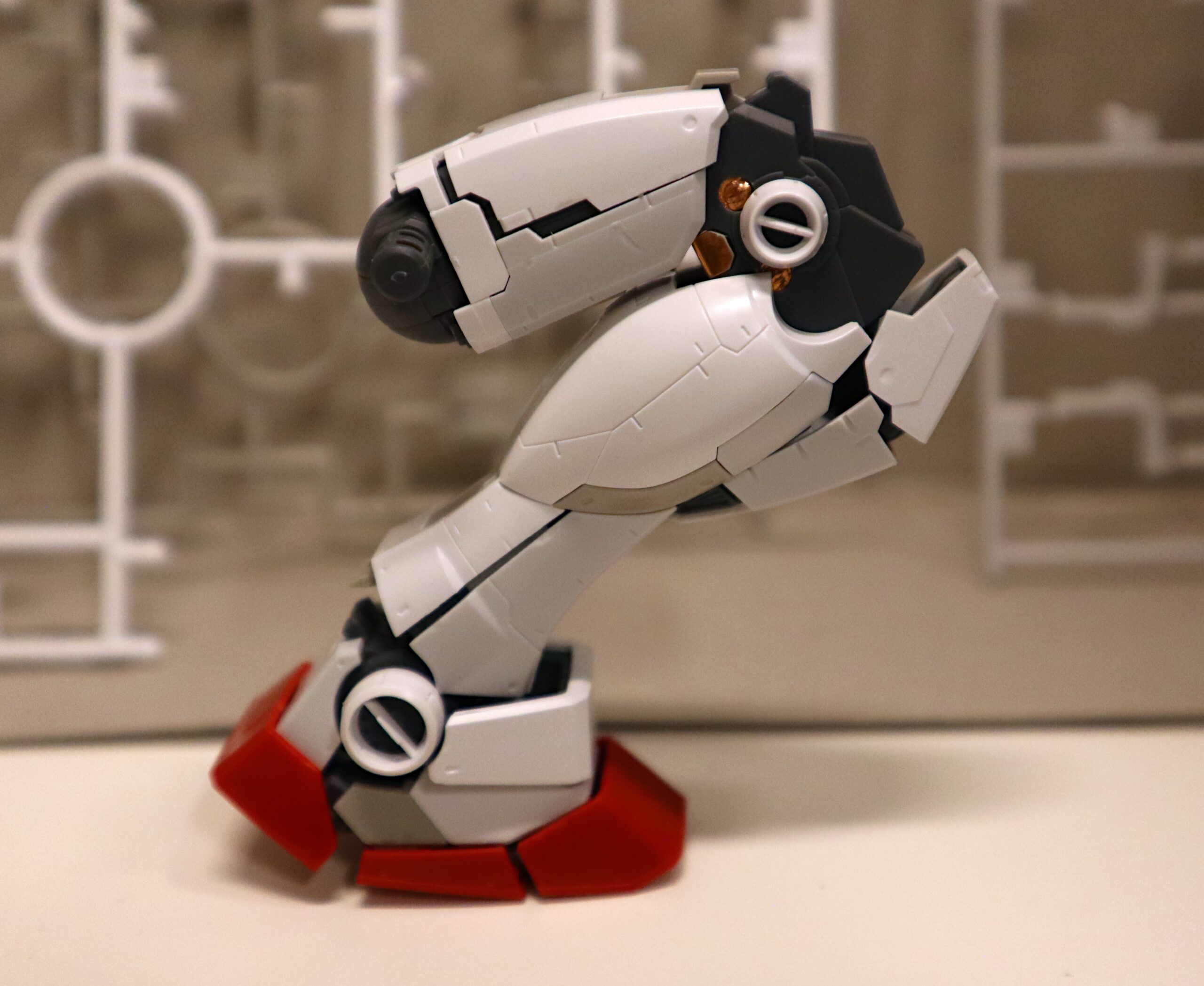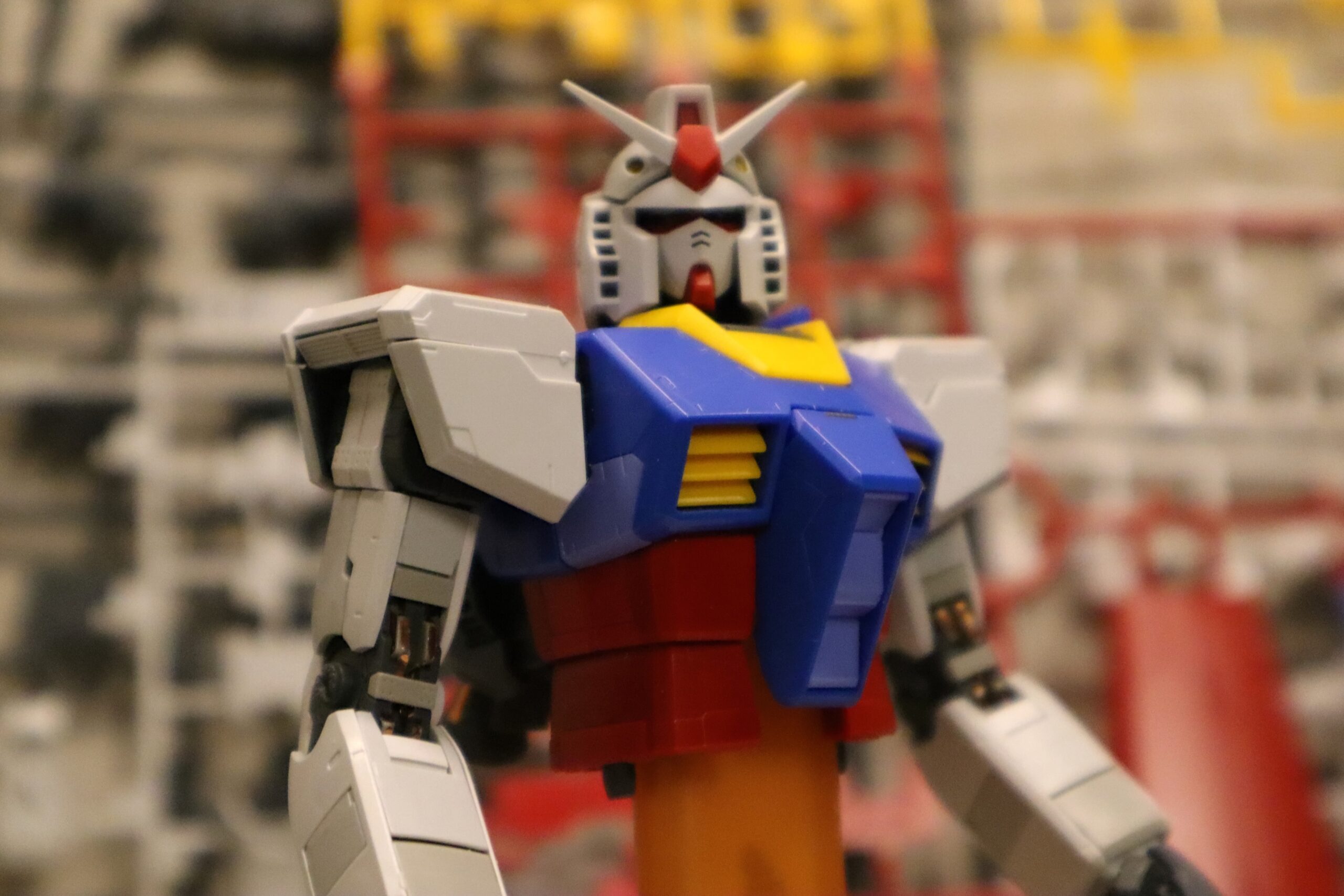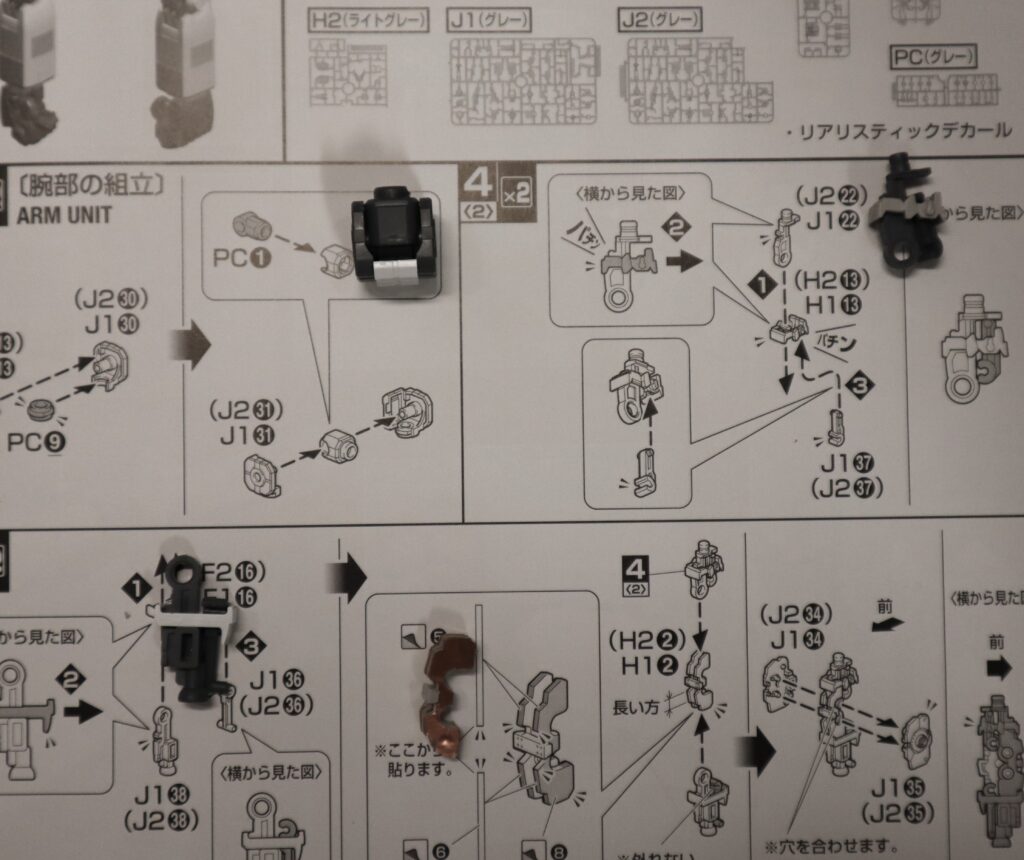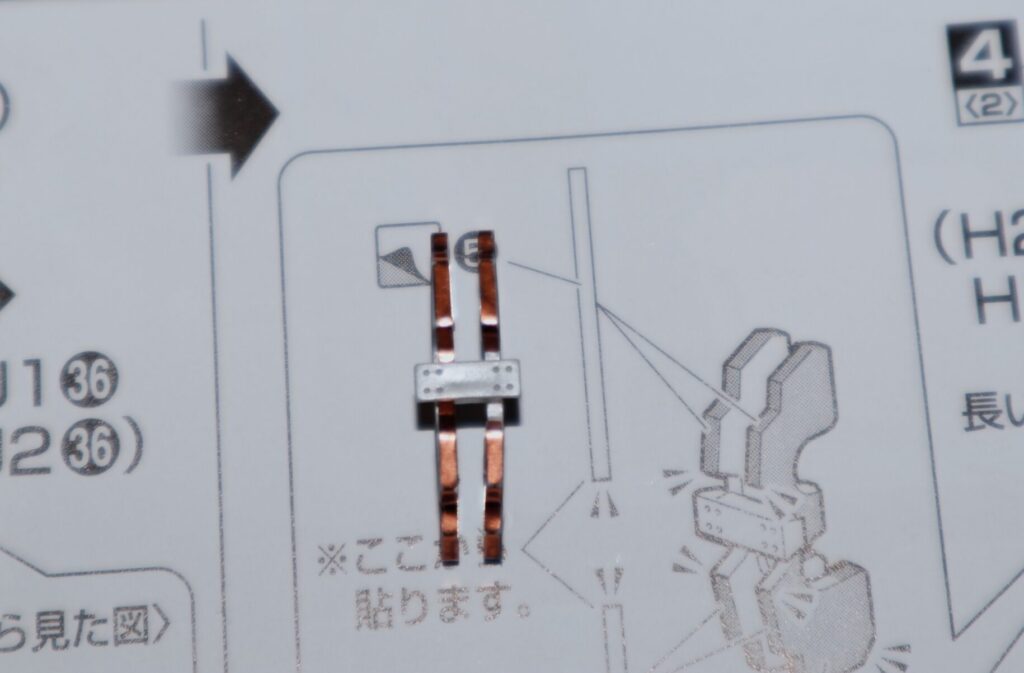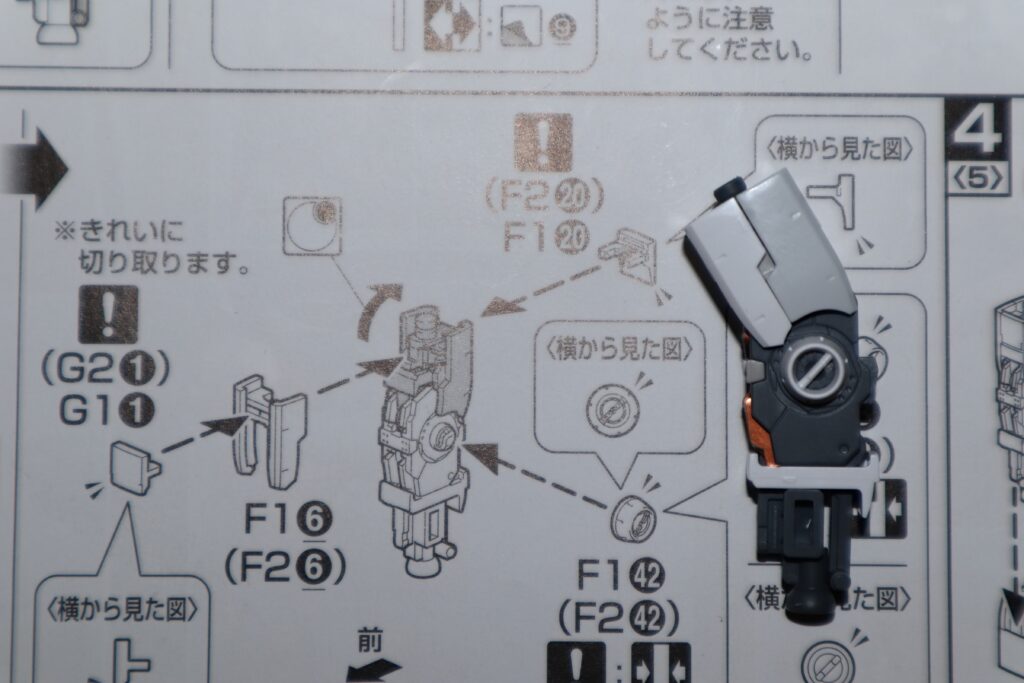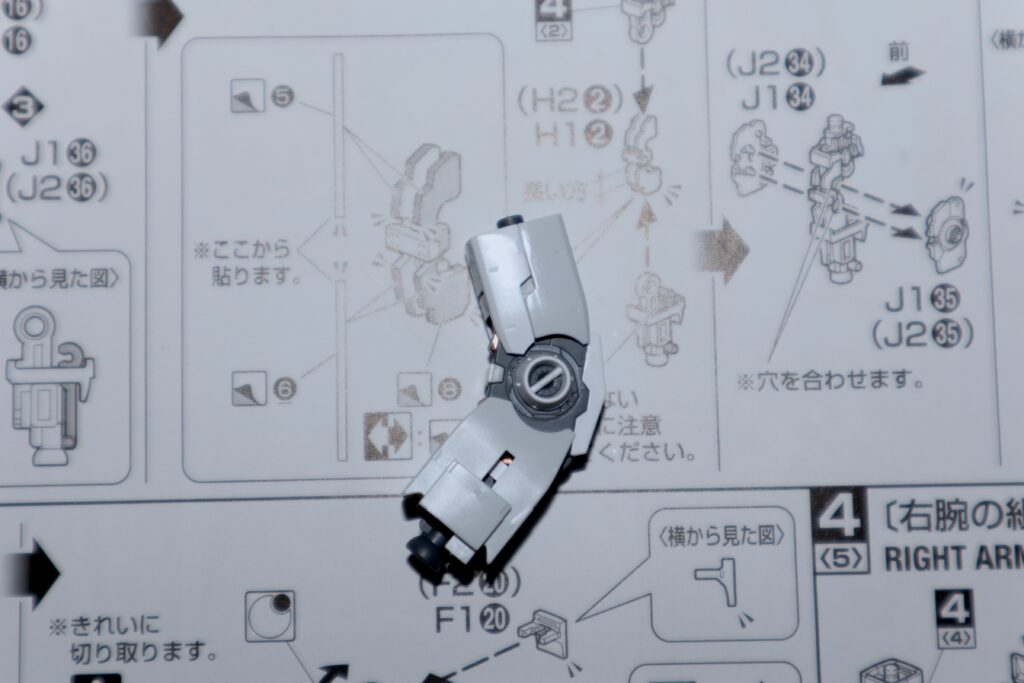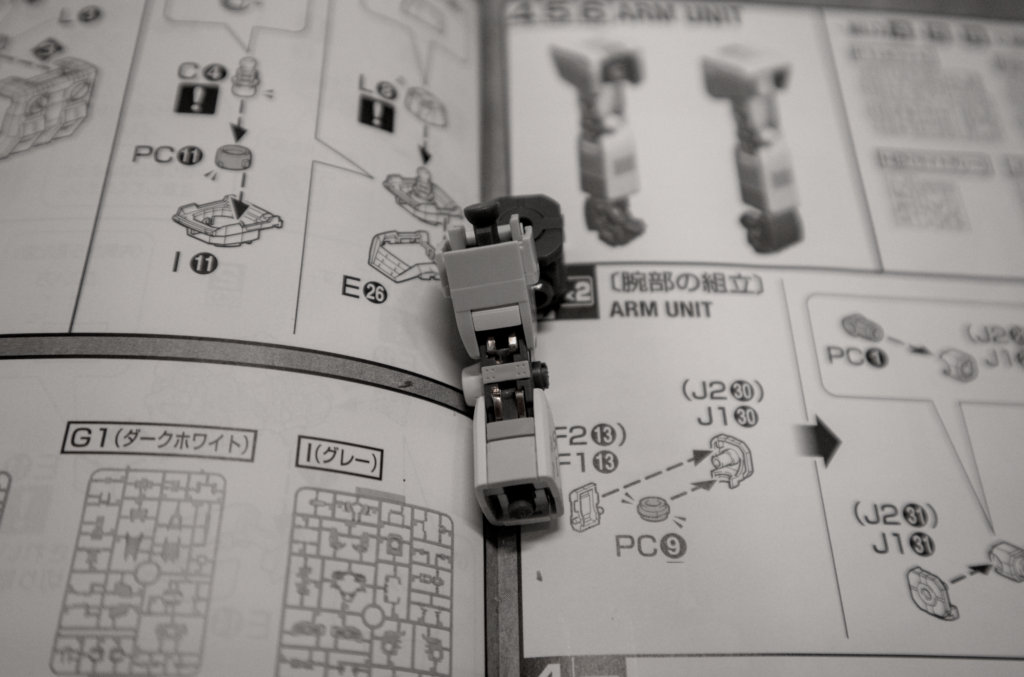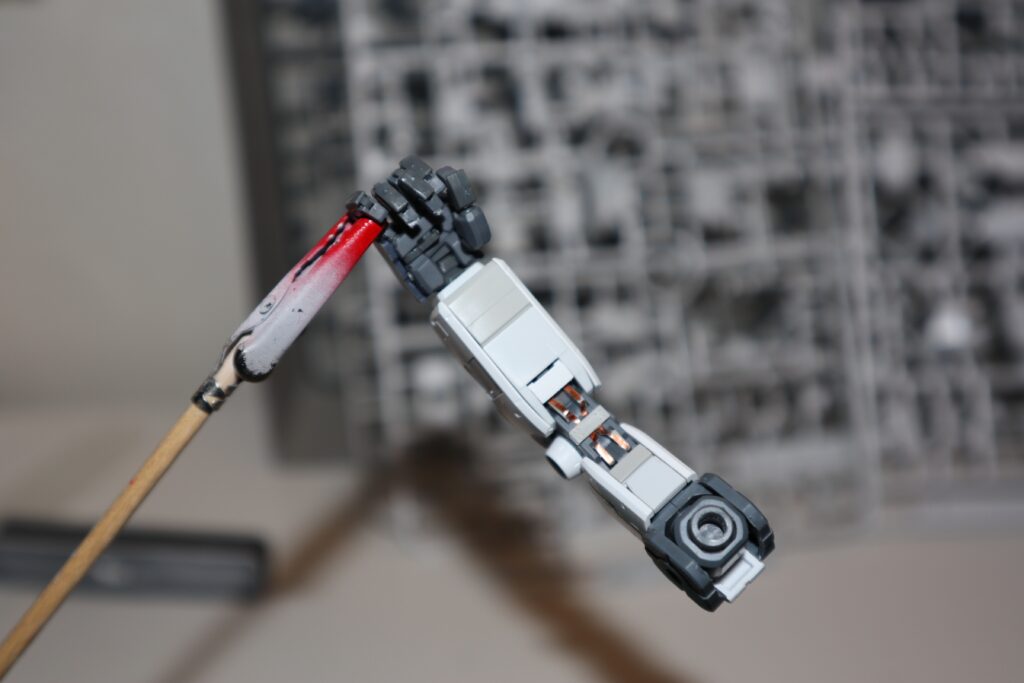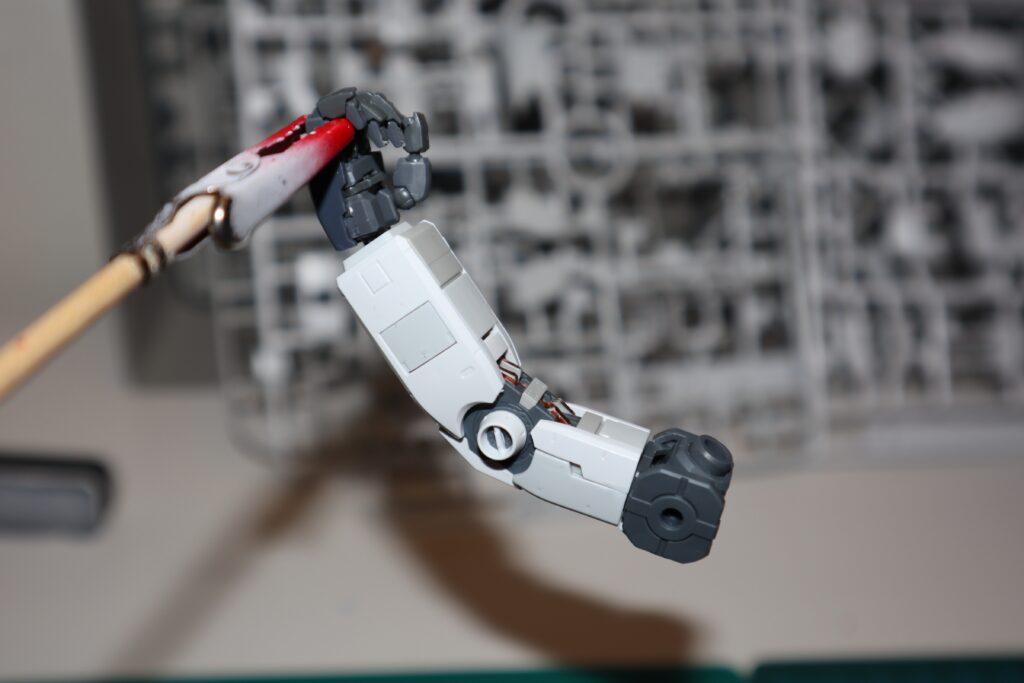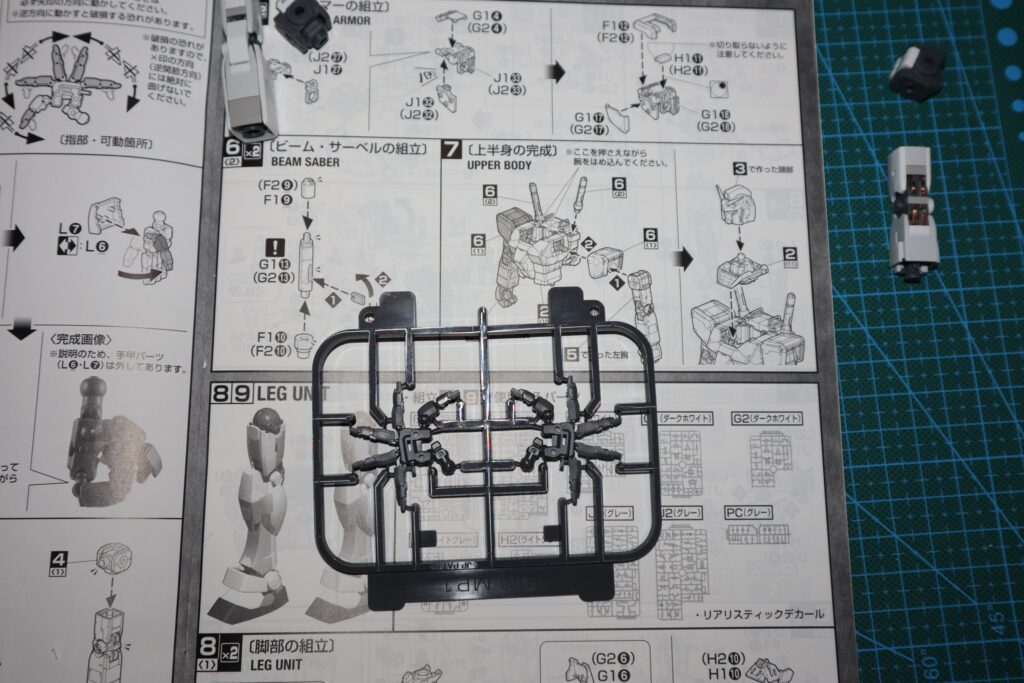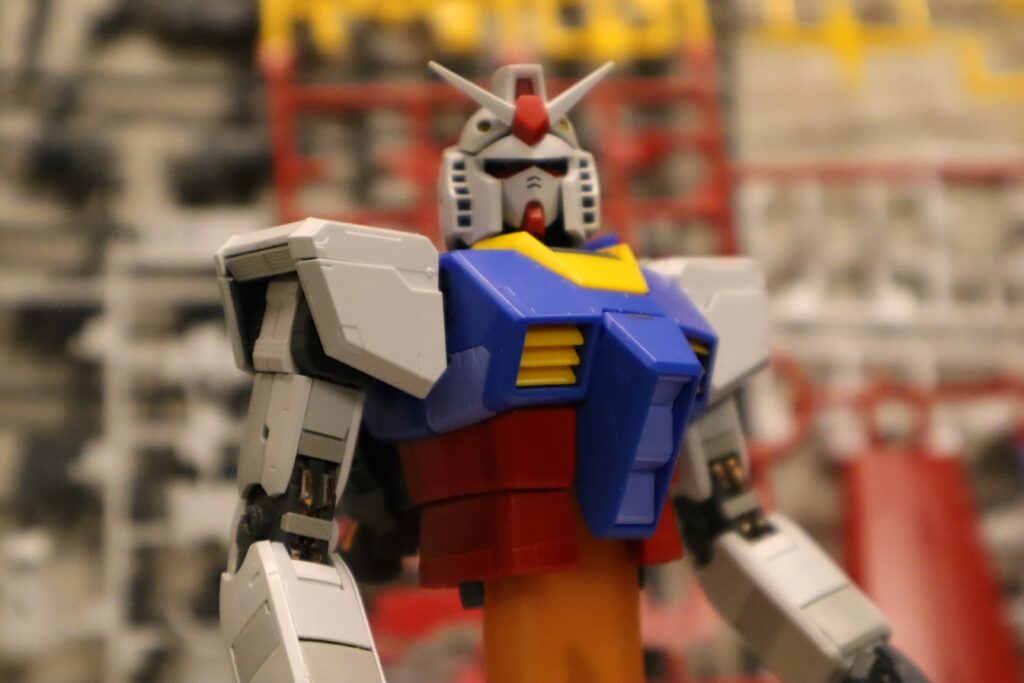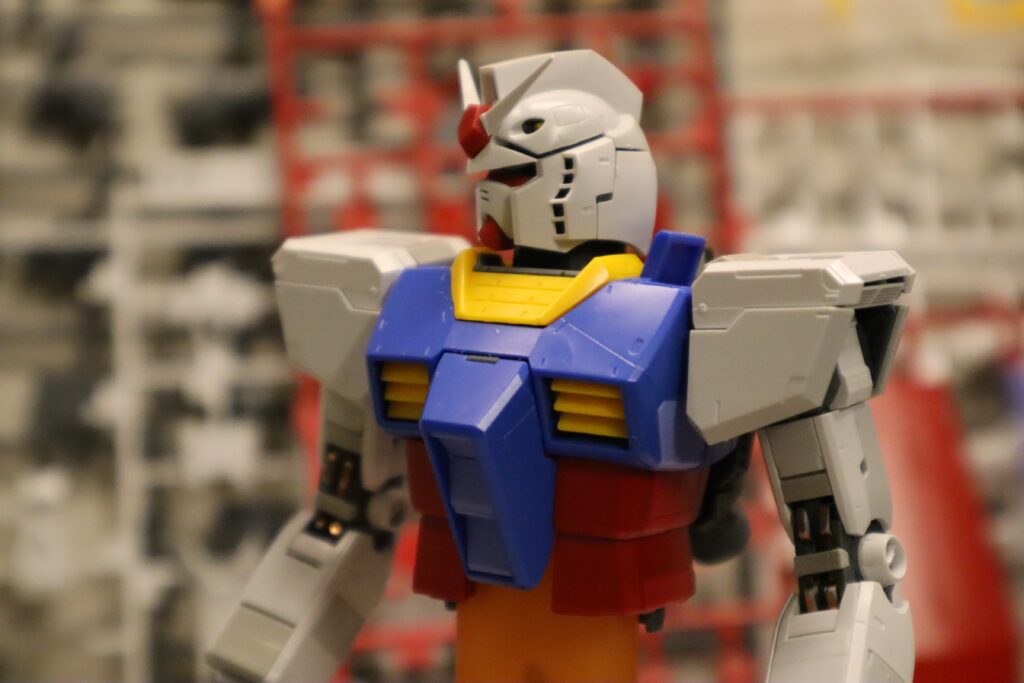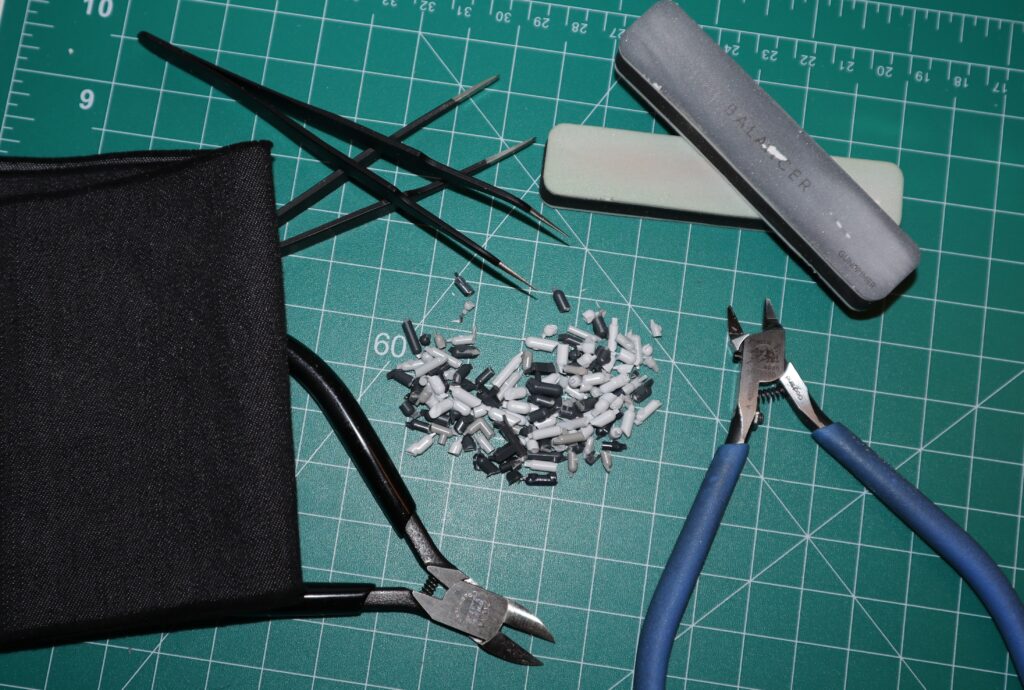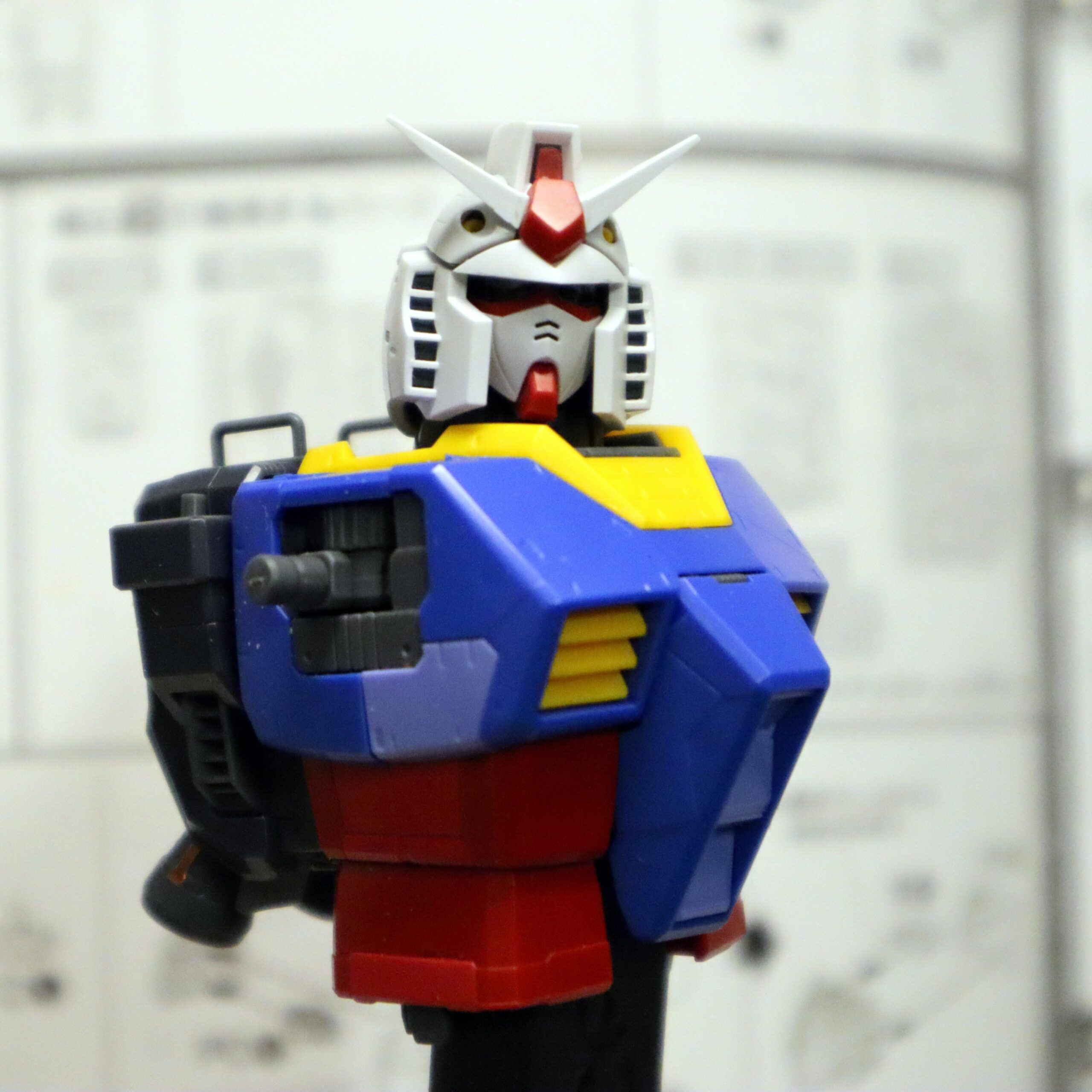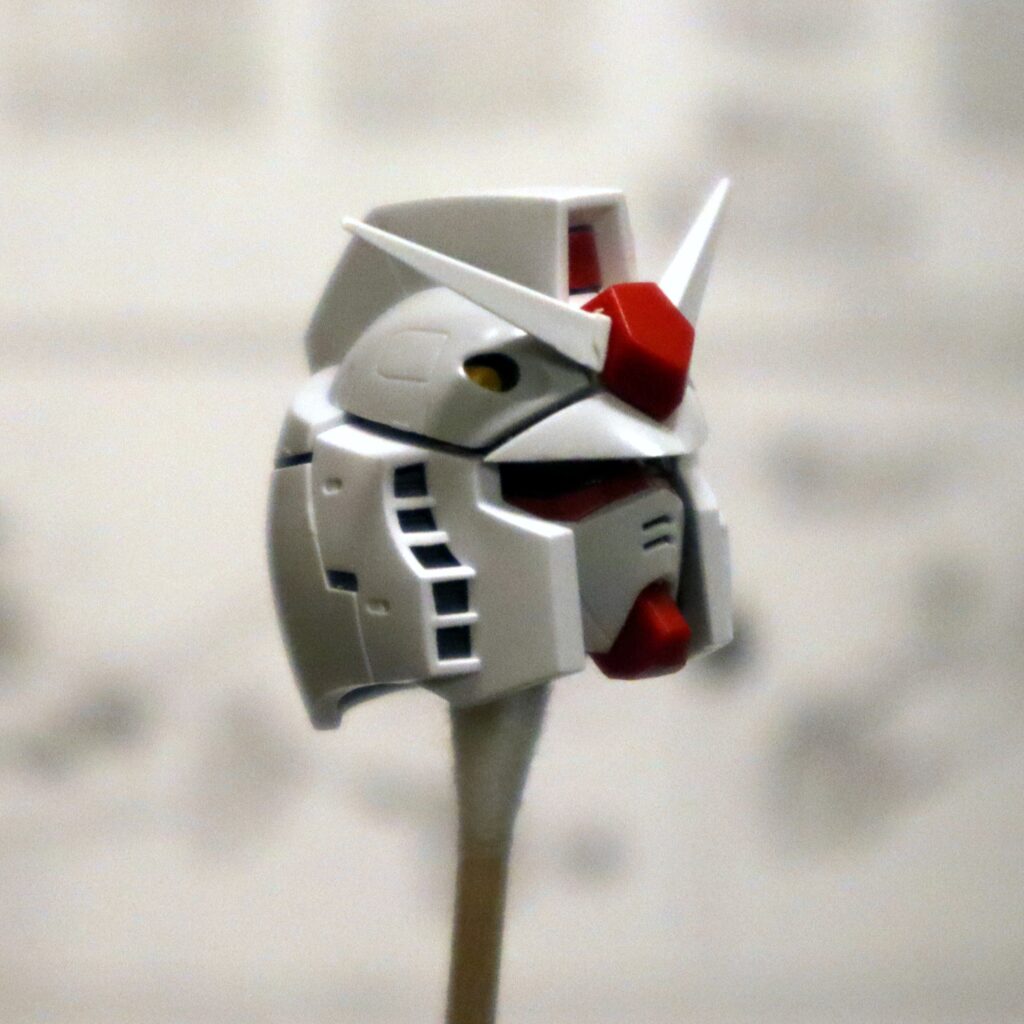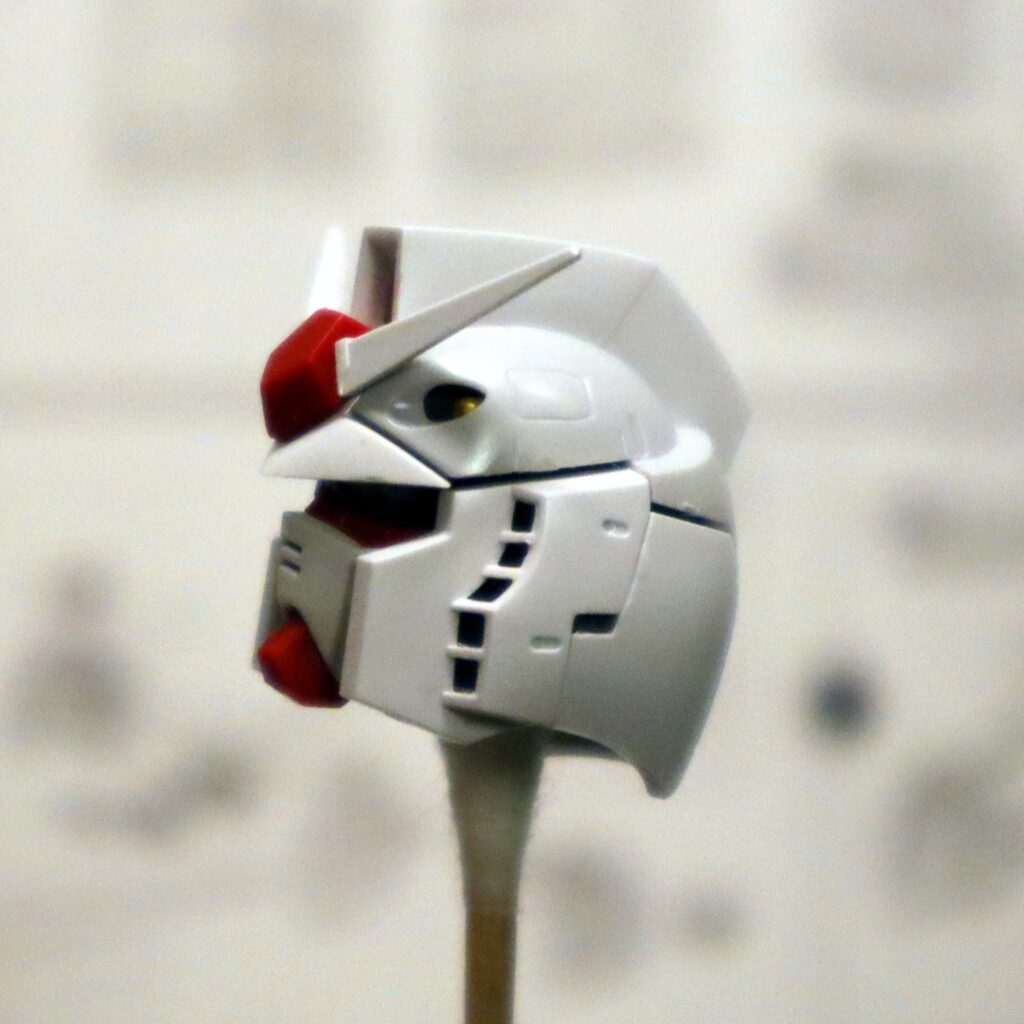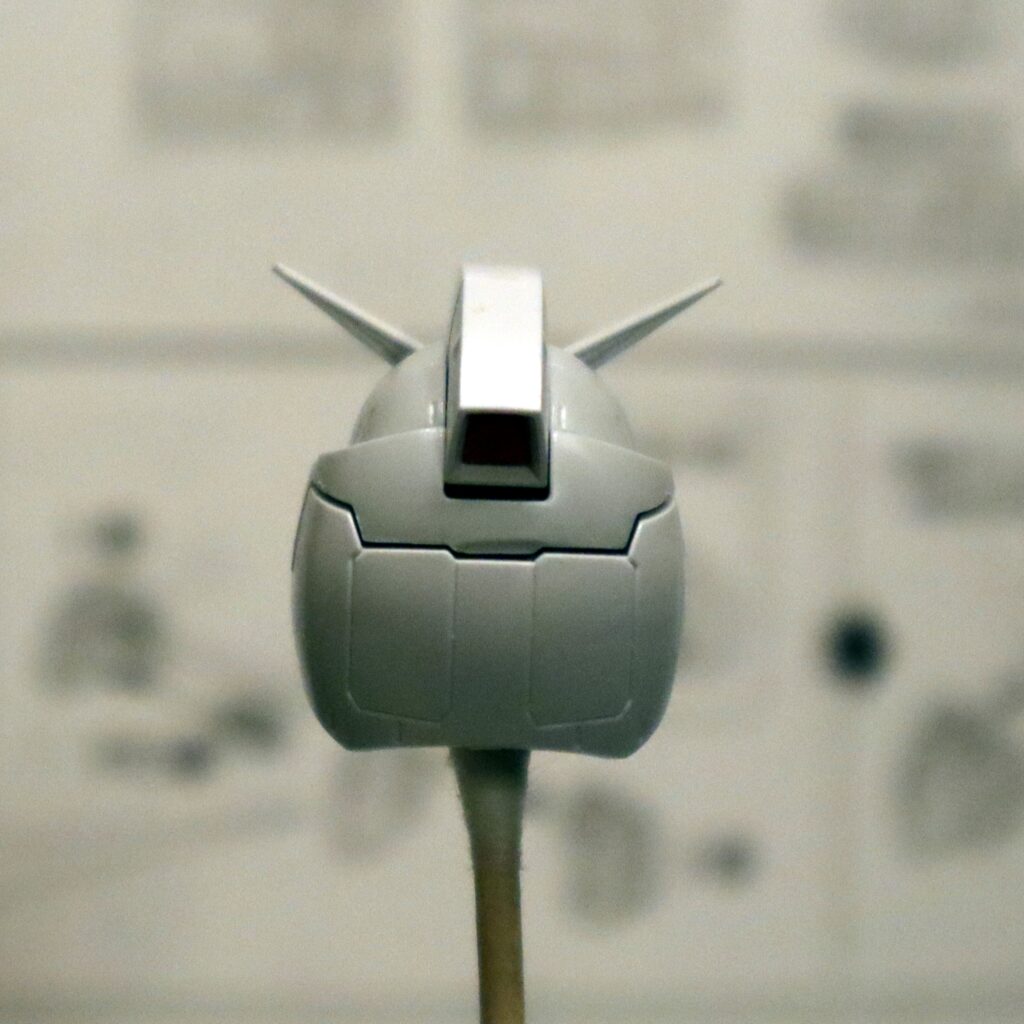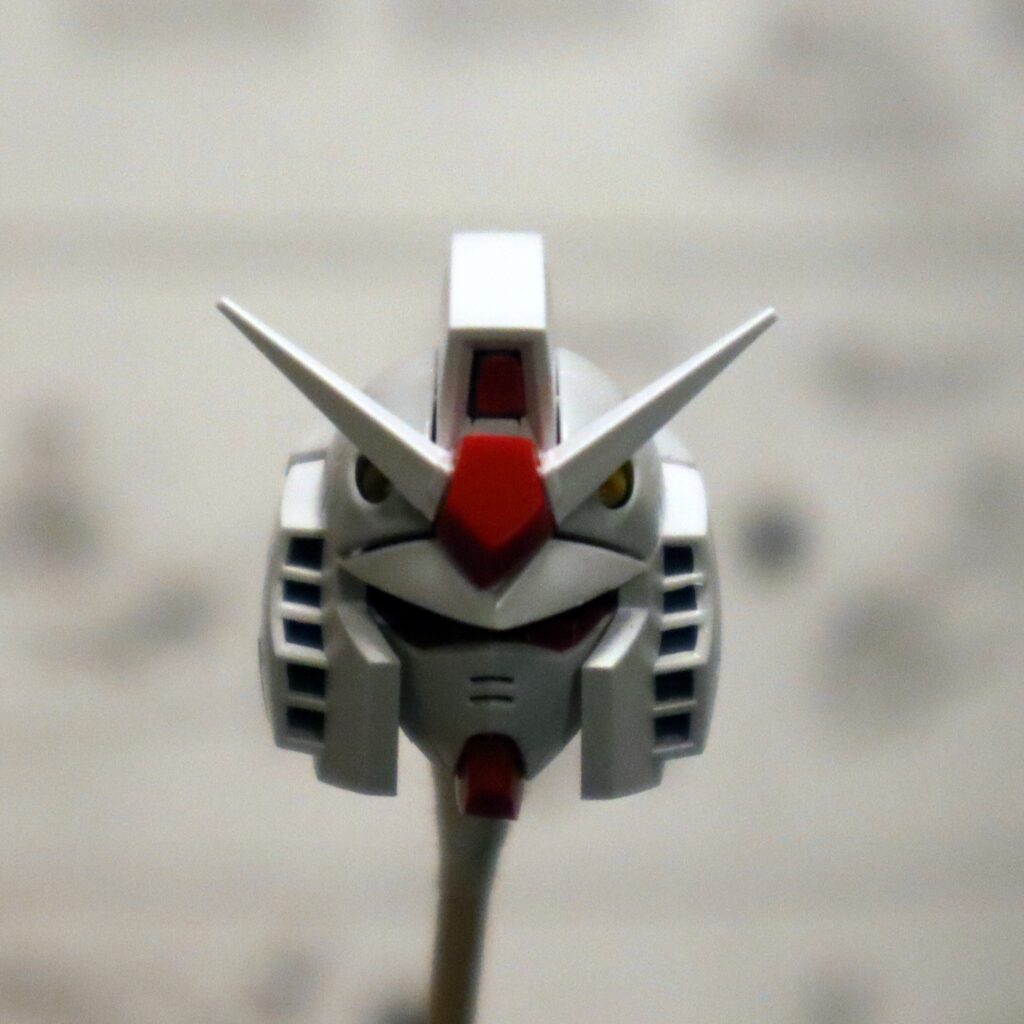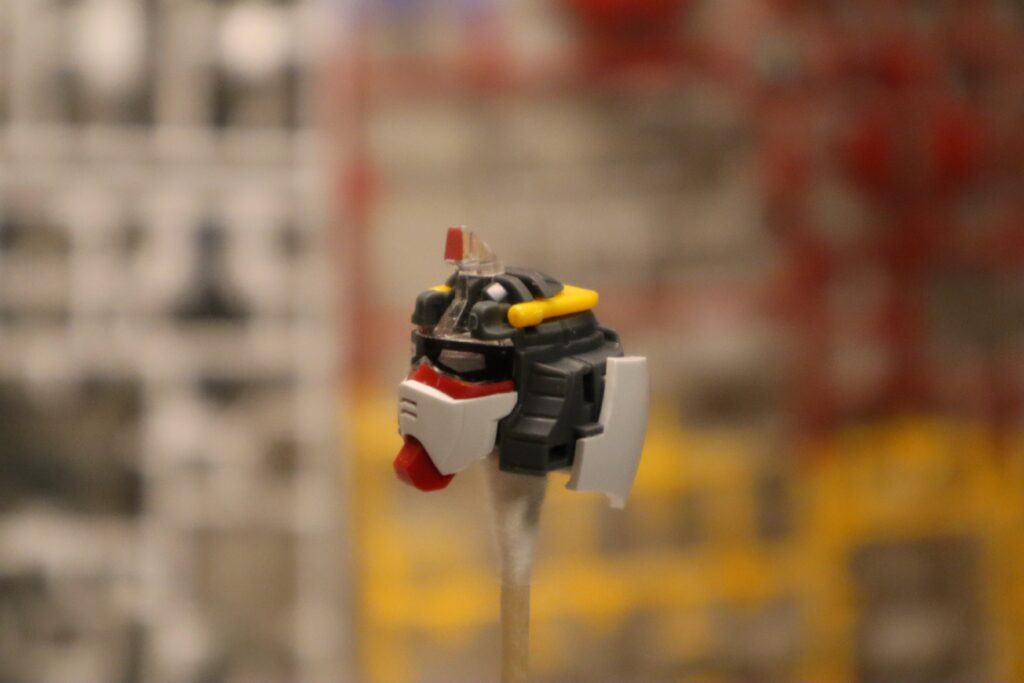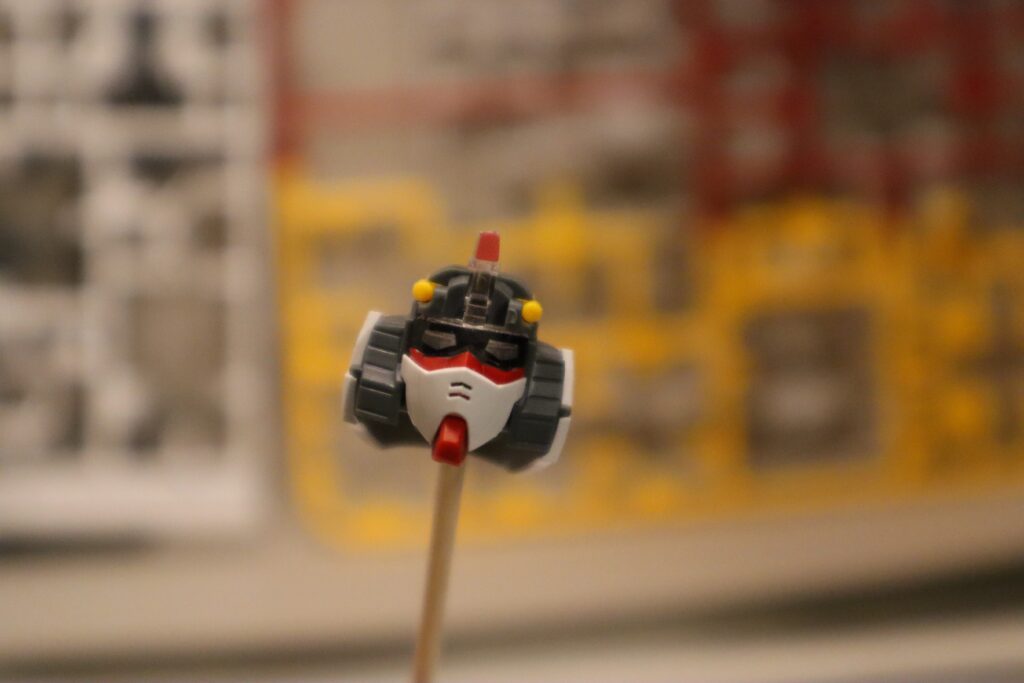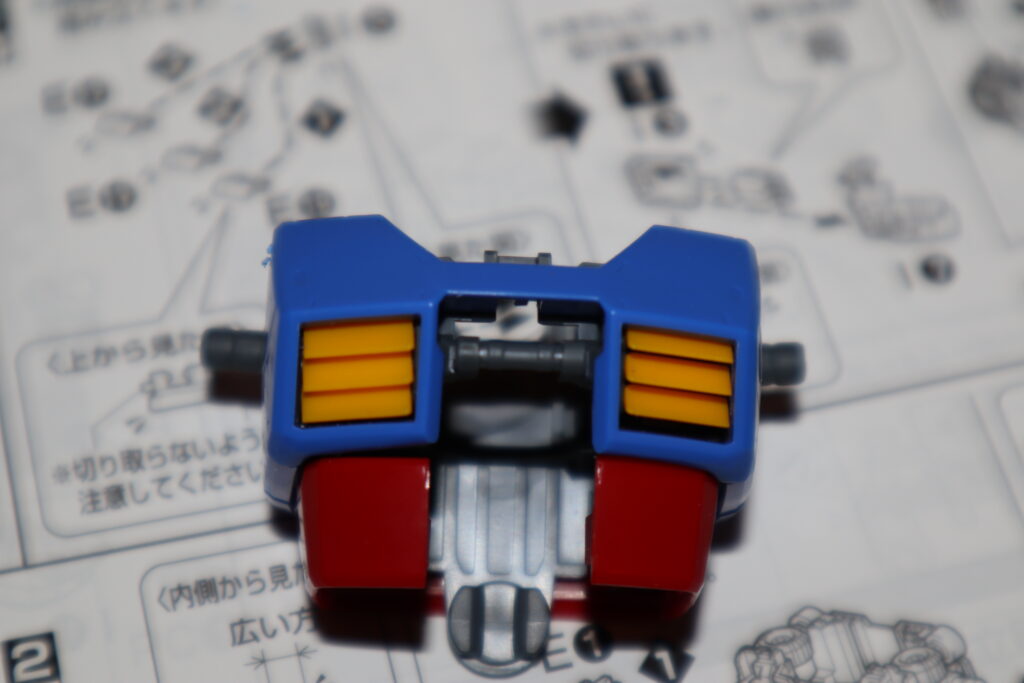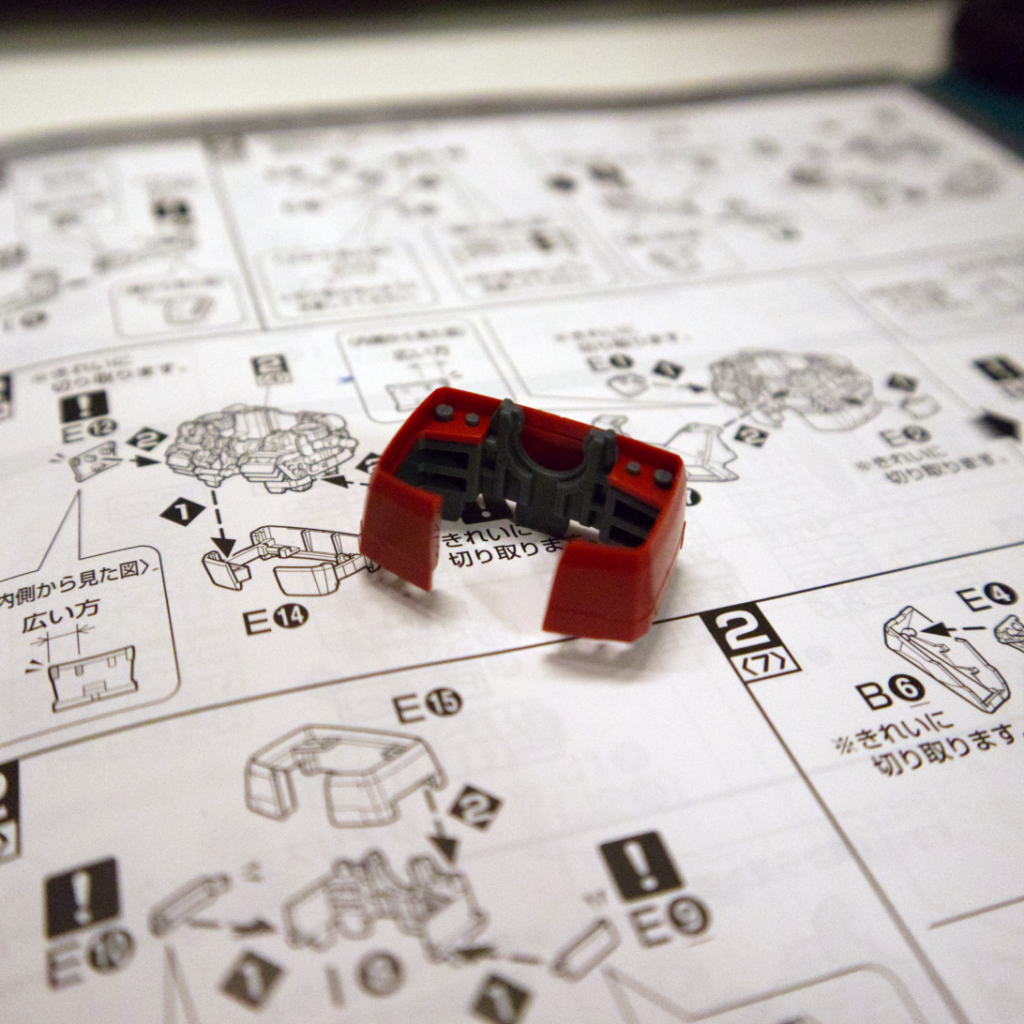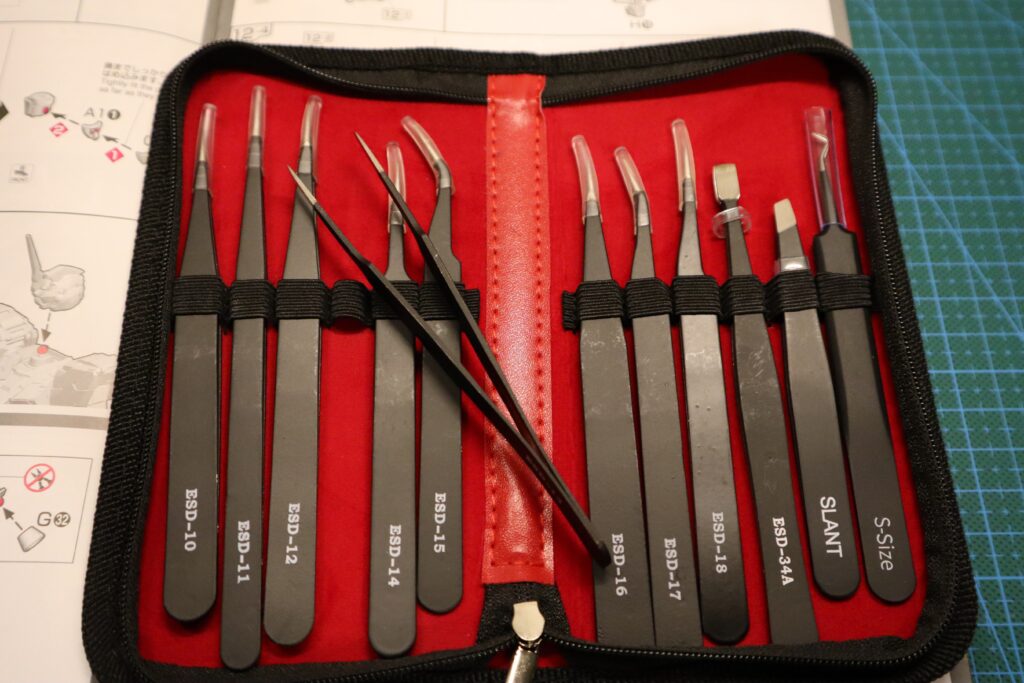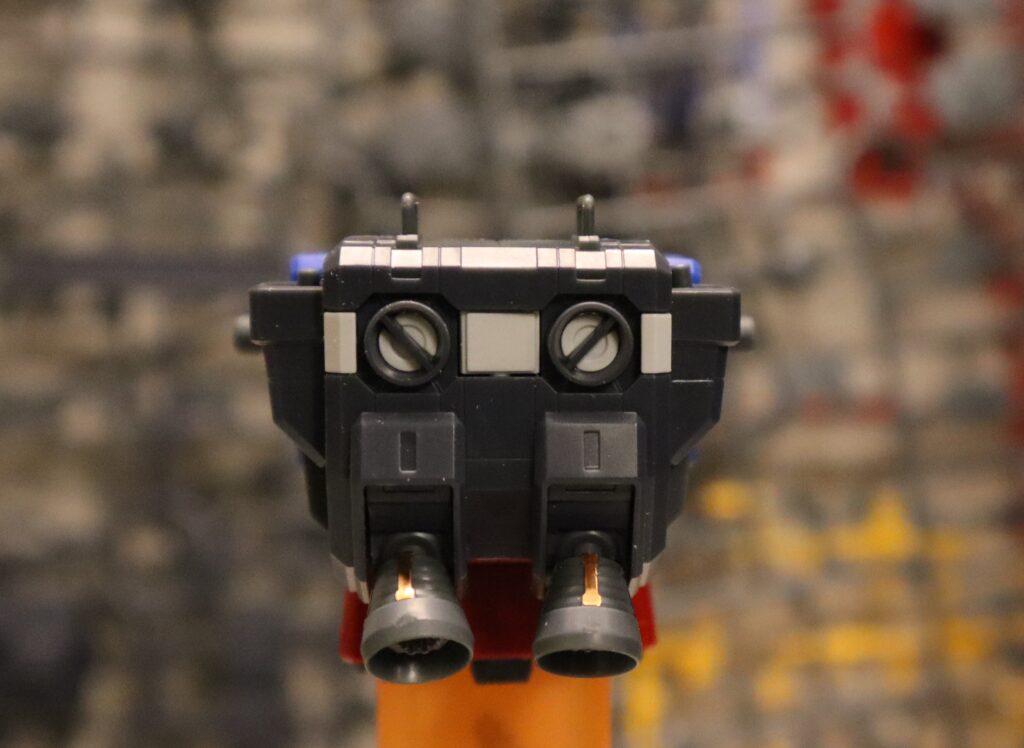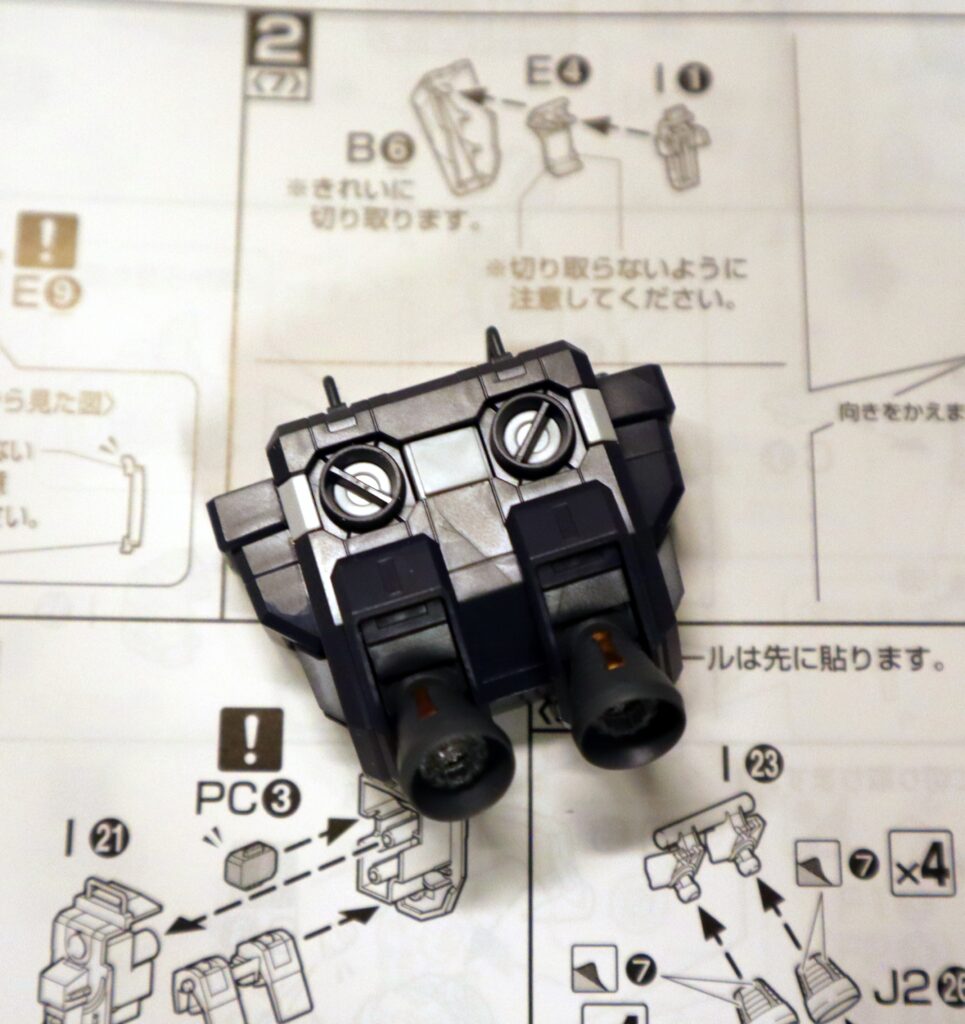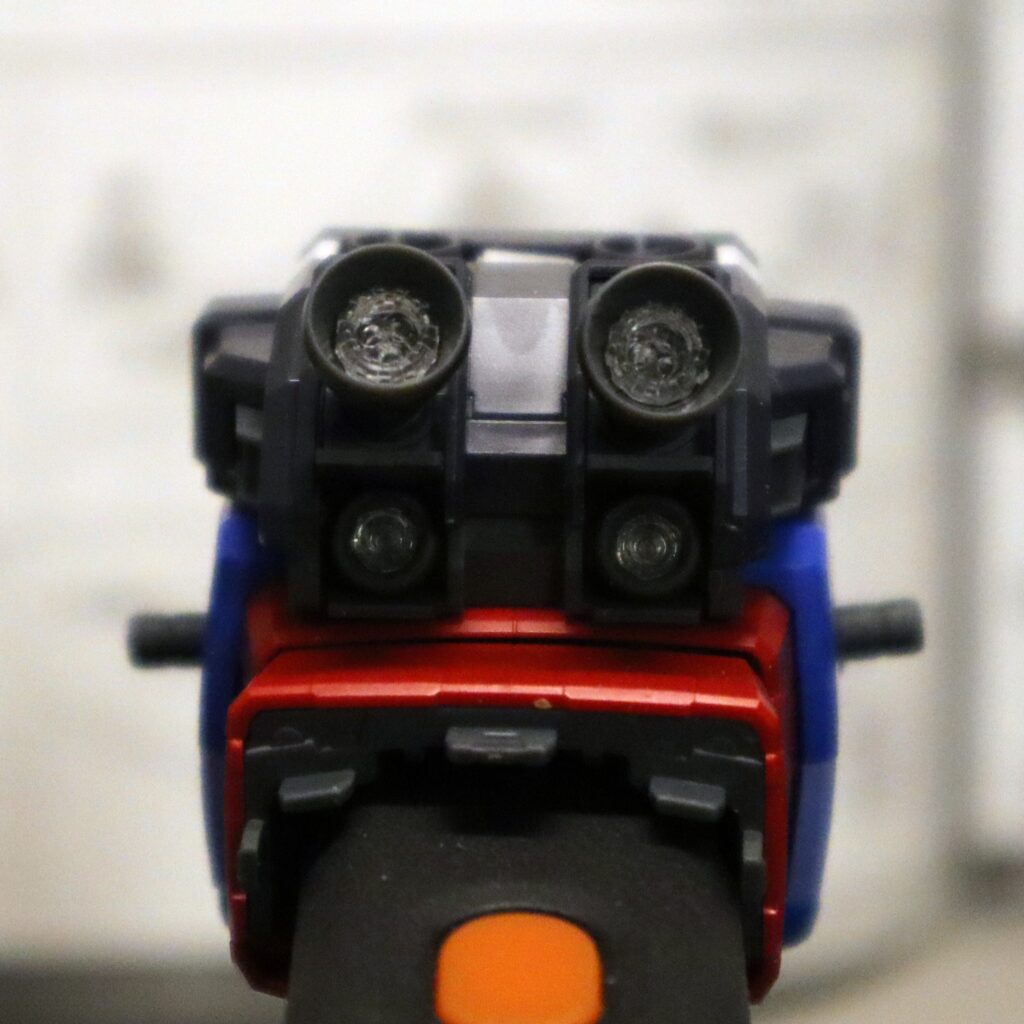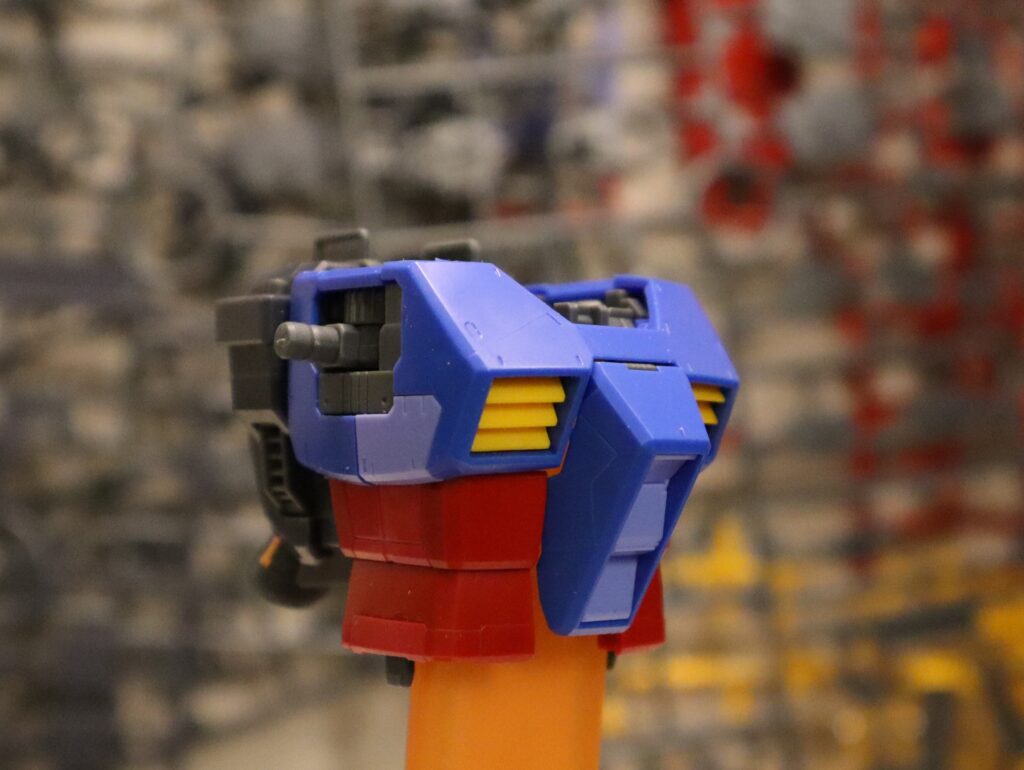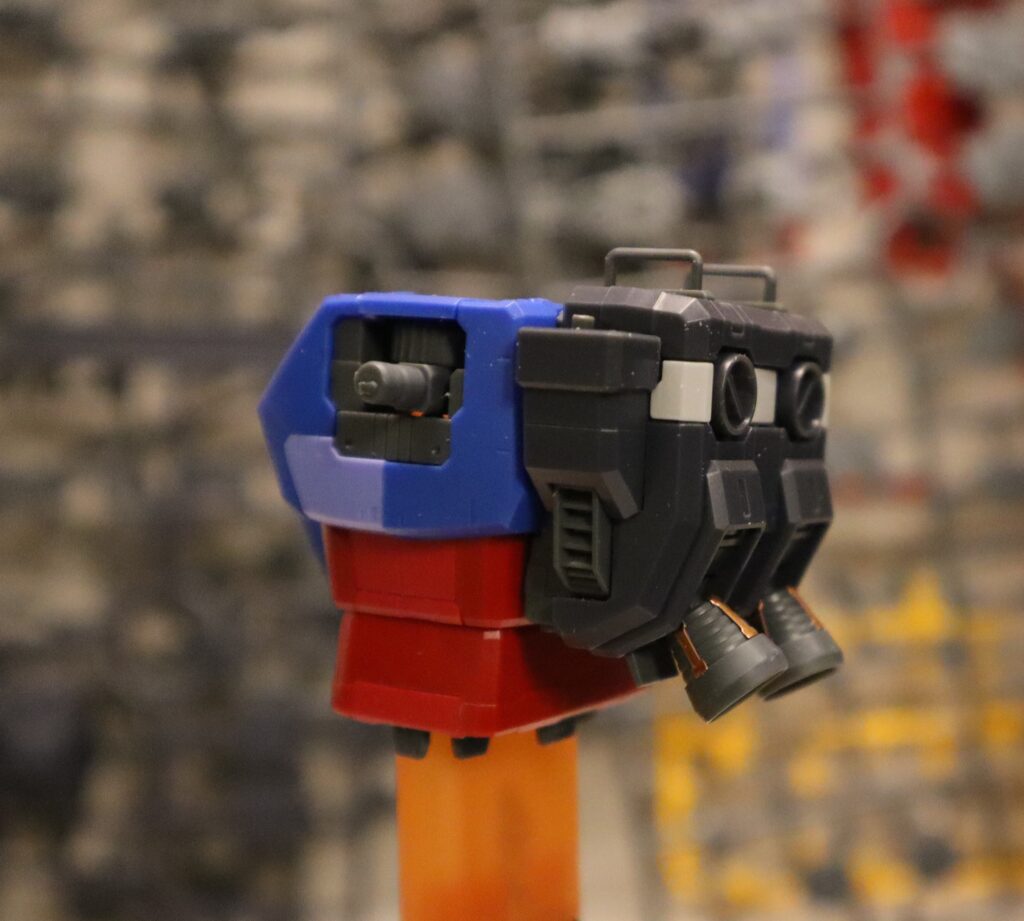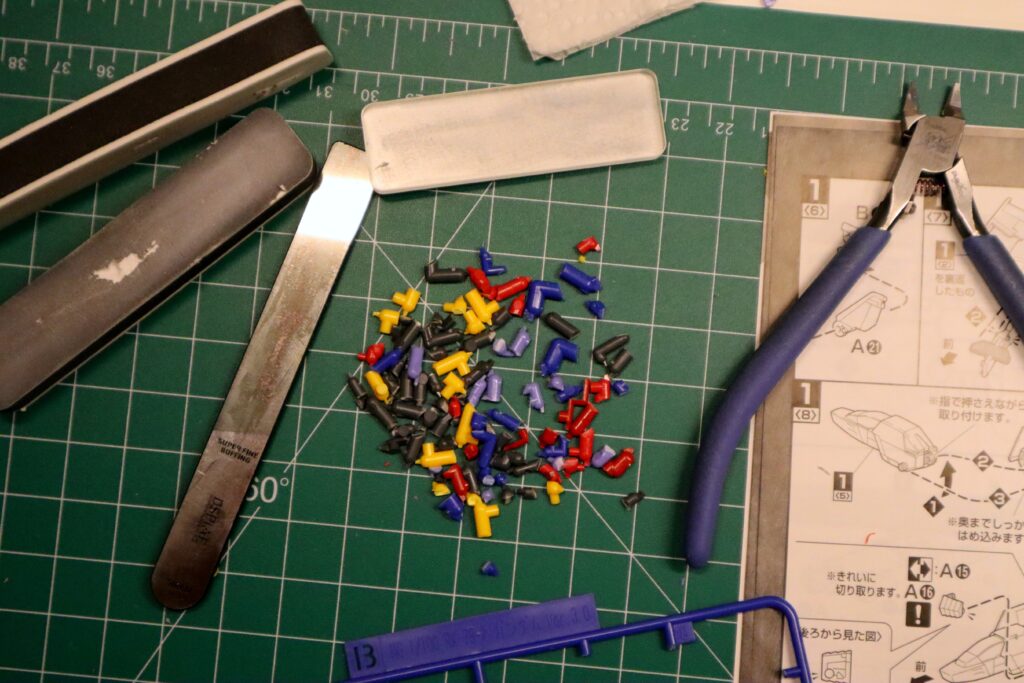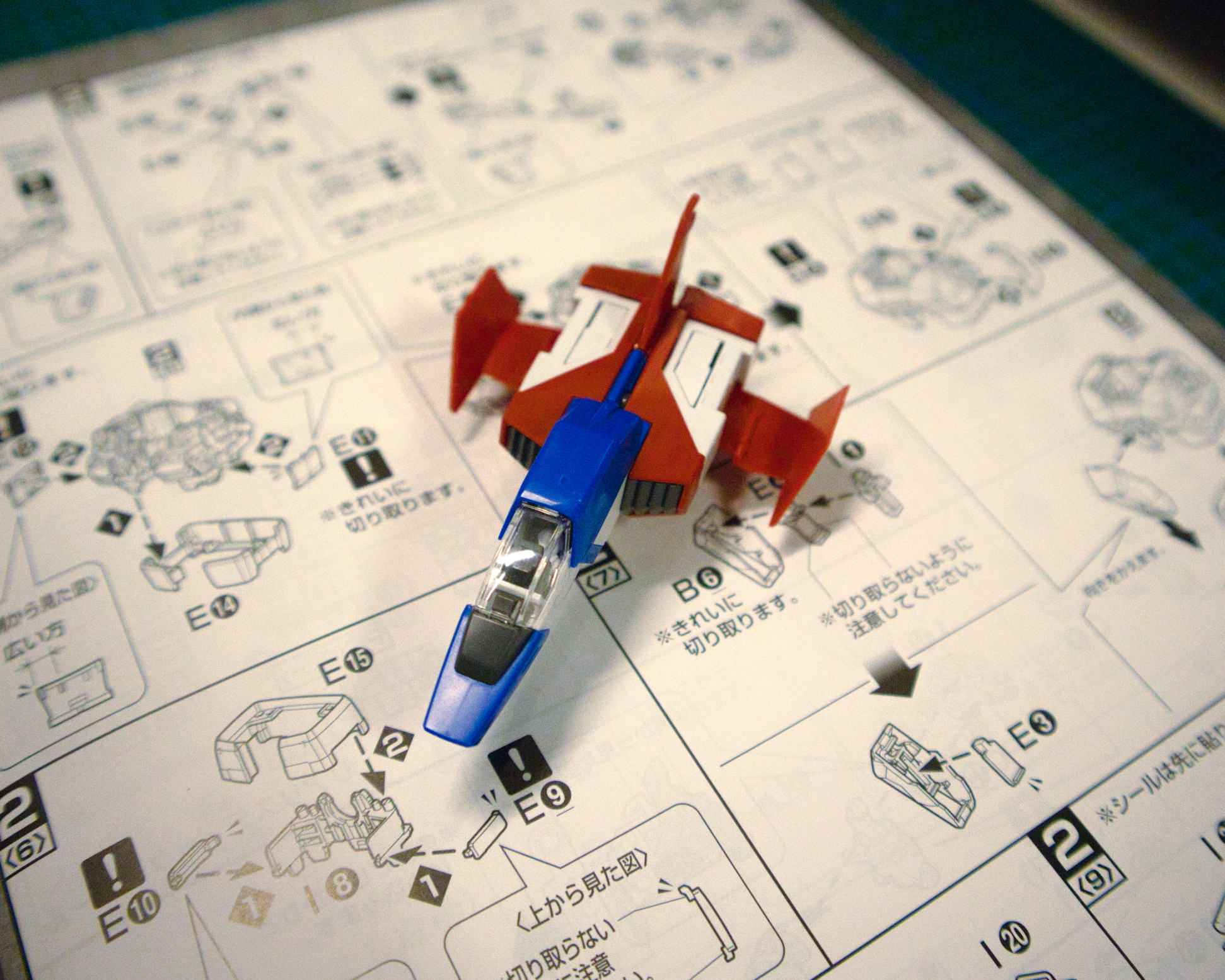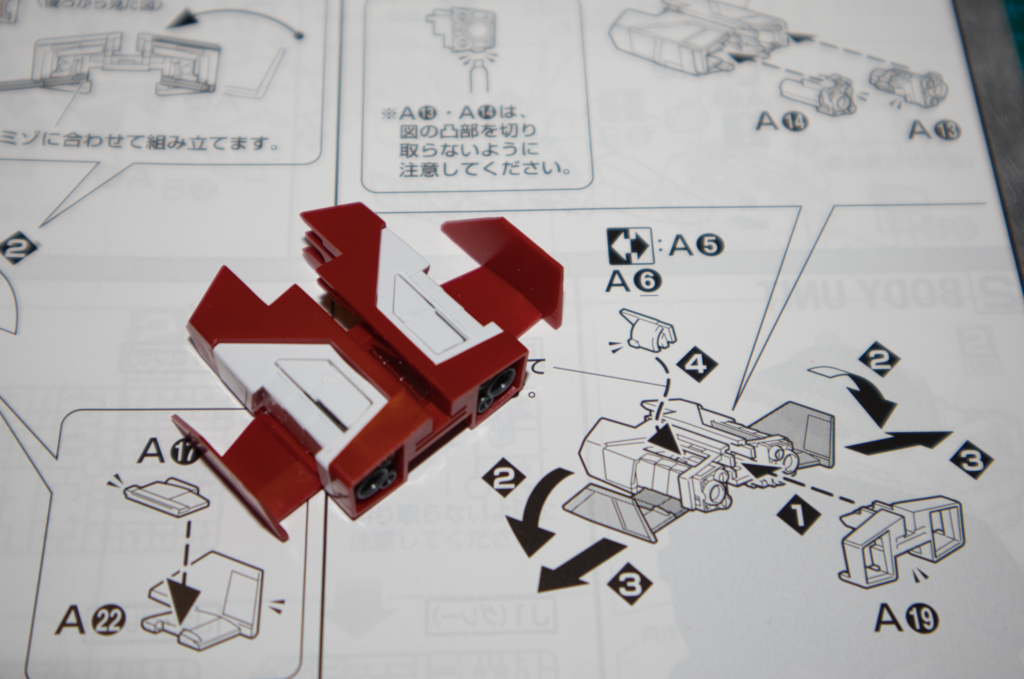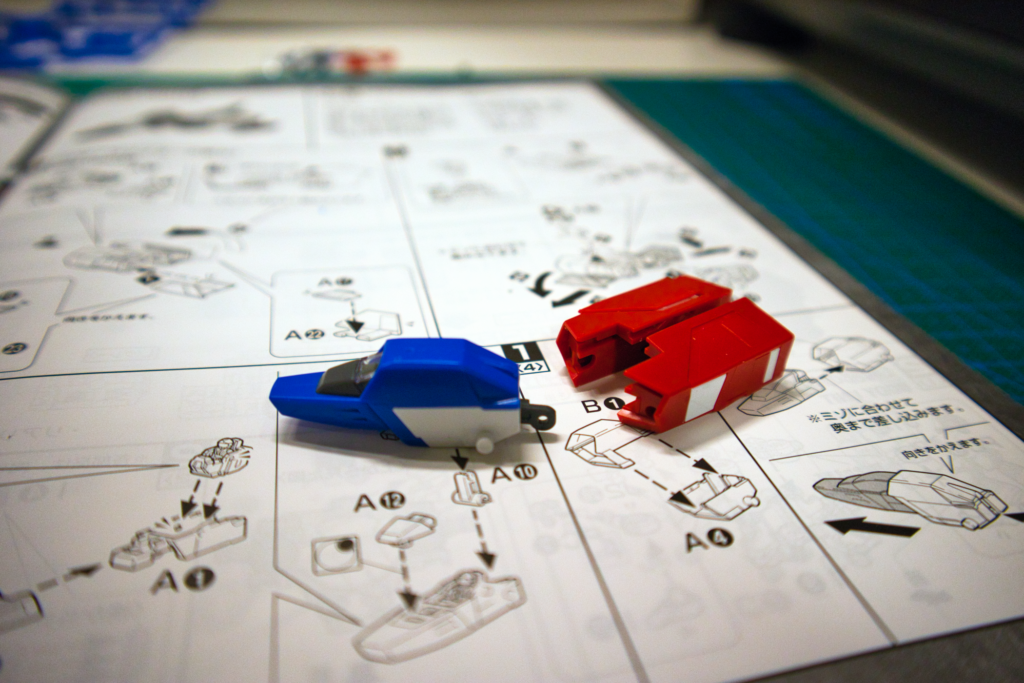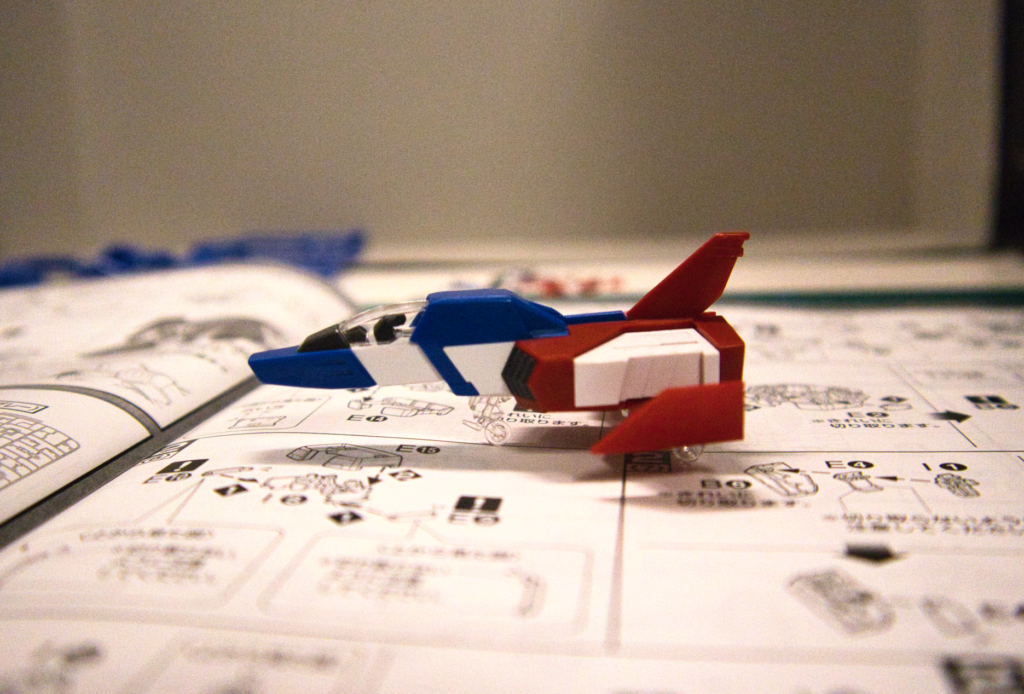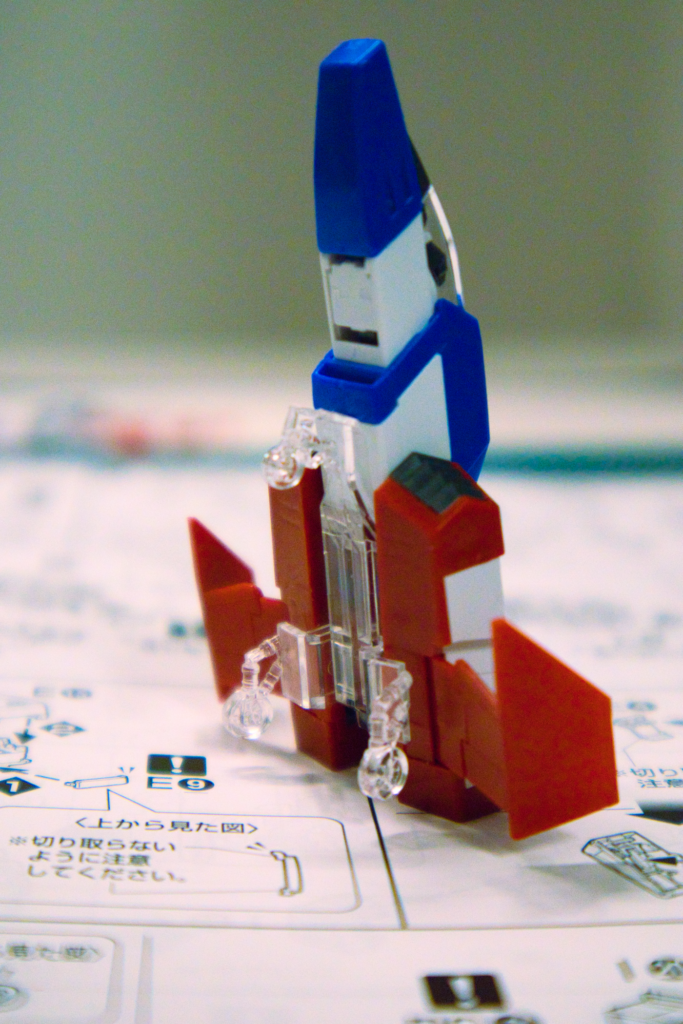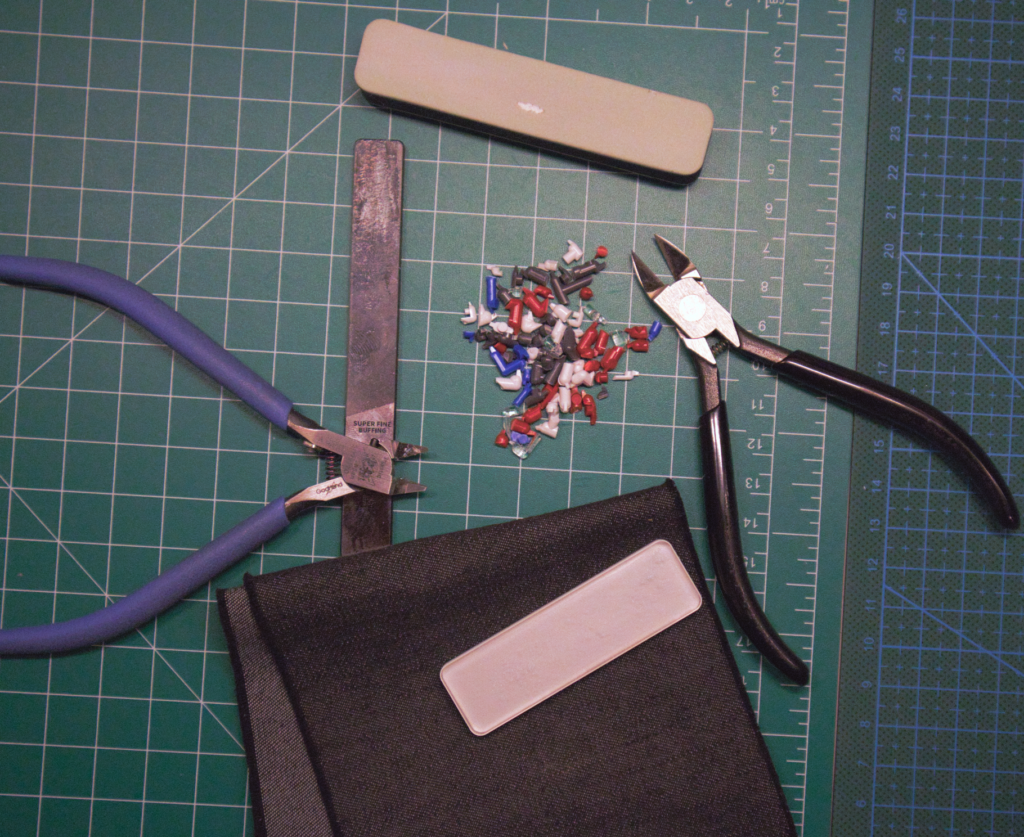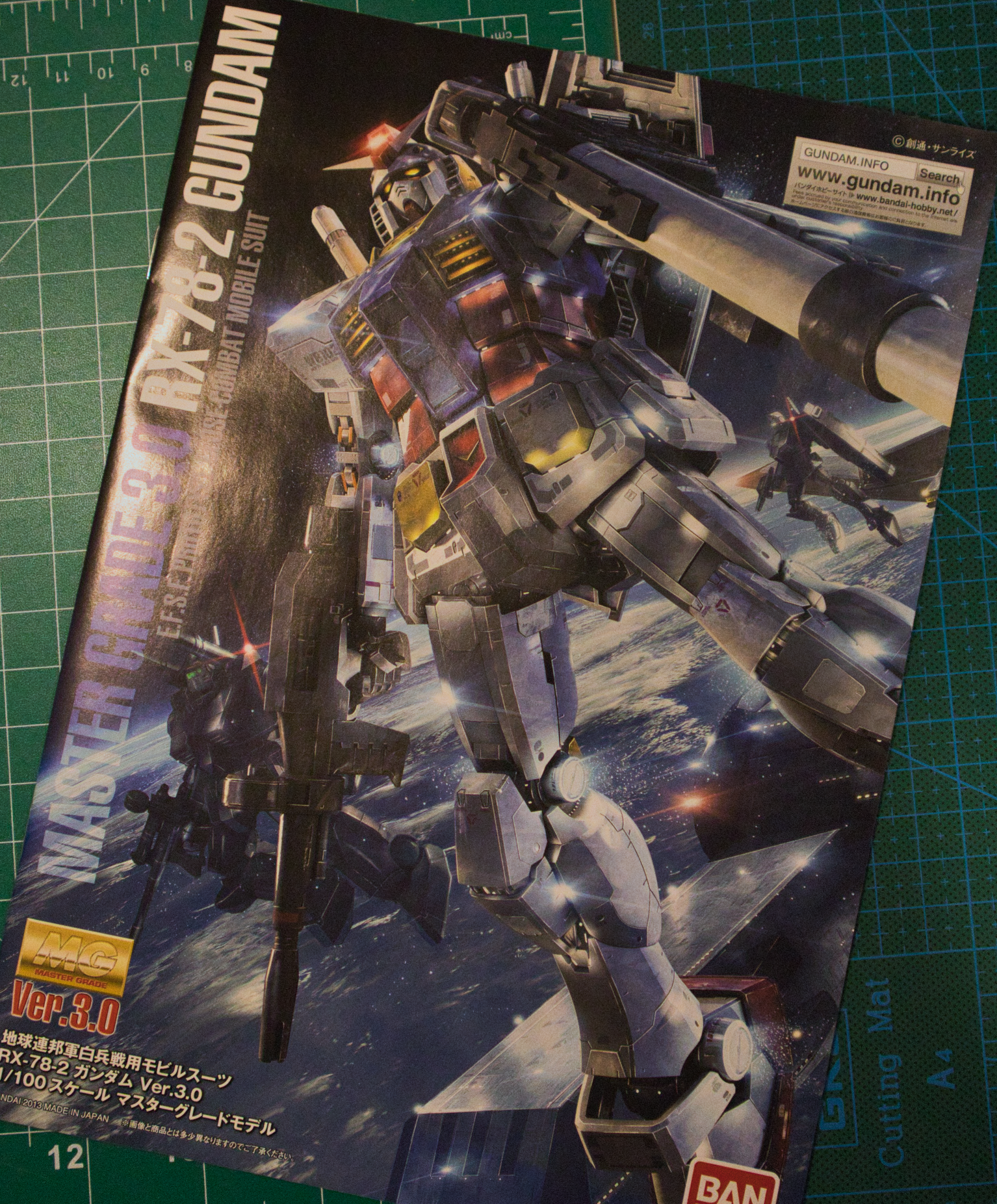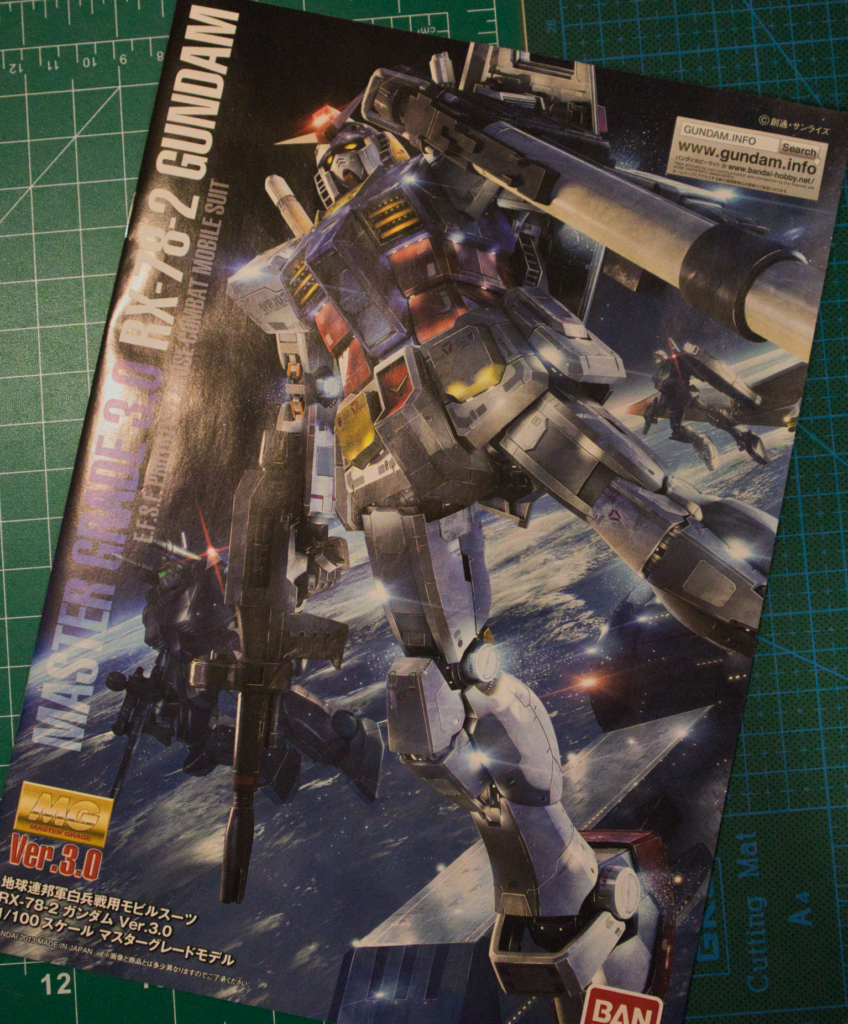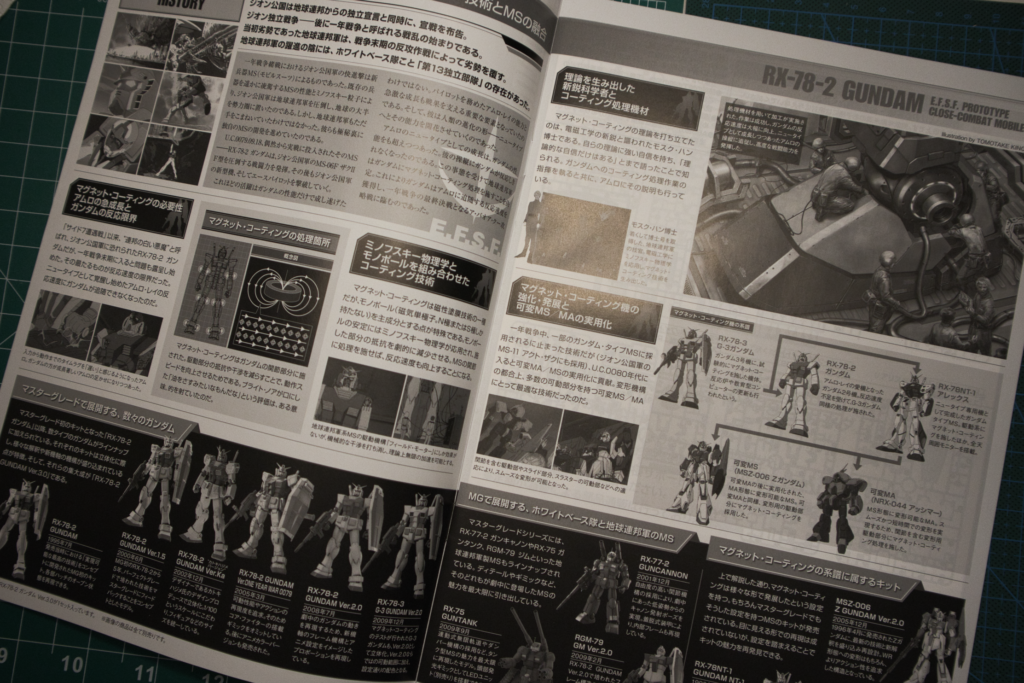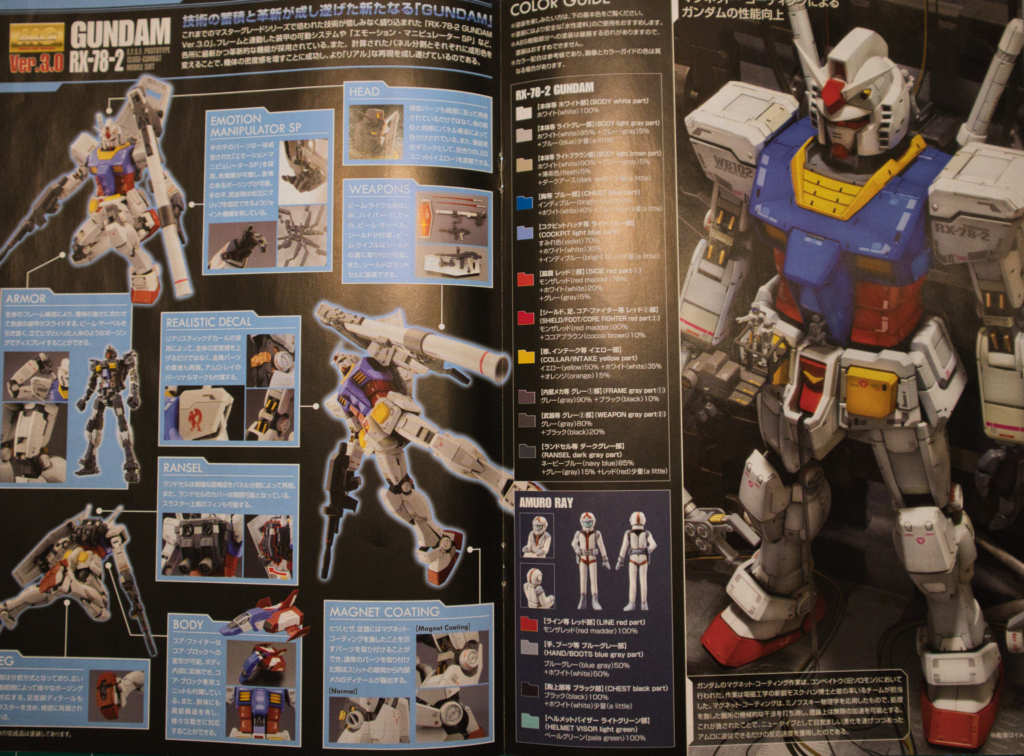The Gundam is half-complete at this point and after assembling the legs, we’ll pretty much have a complete mech sans weaponry.
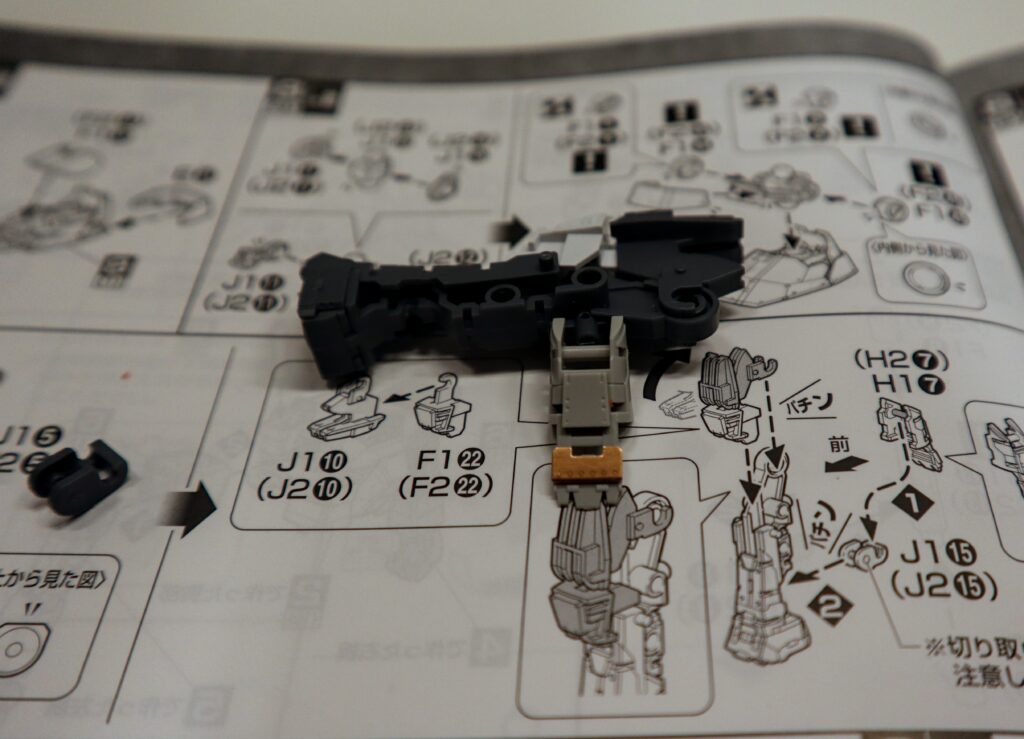
Like most Master Grades, the legs use an inner black plastic frame that are assembled in two halves. They also feature a few hinky things here and there that’ll leave you staring at the instructions and scratching your head to figure out how these pieces really go together.
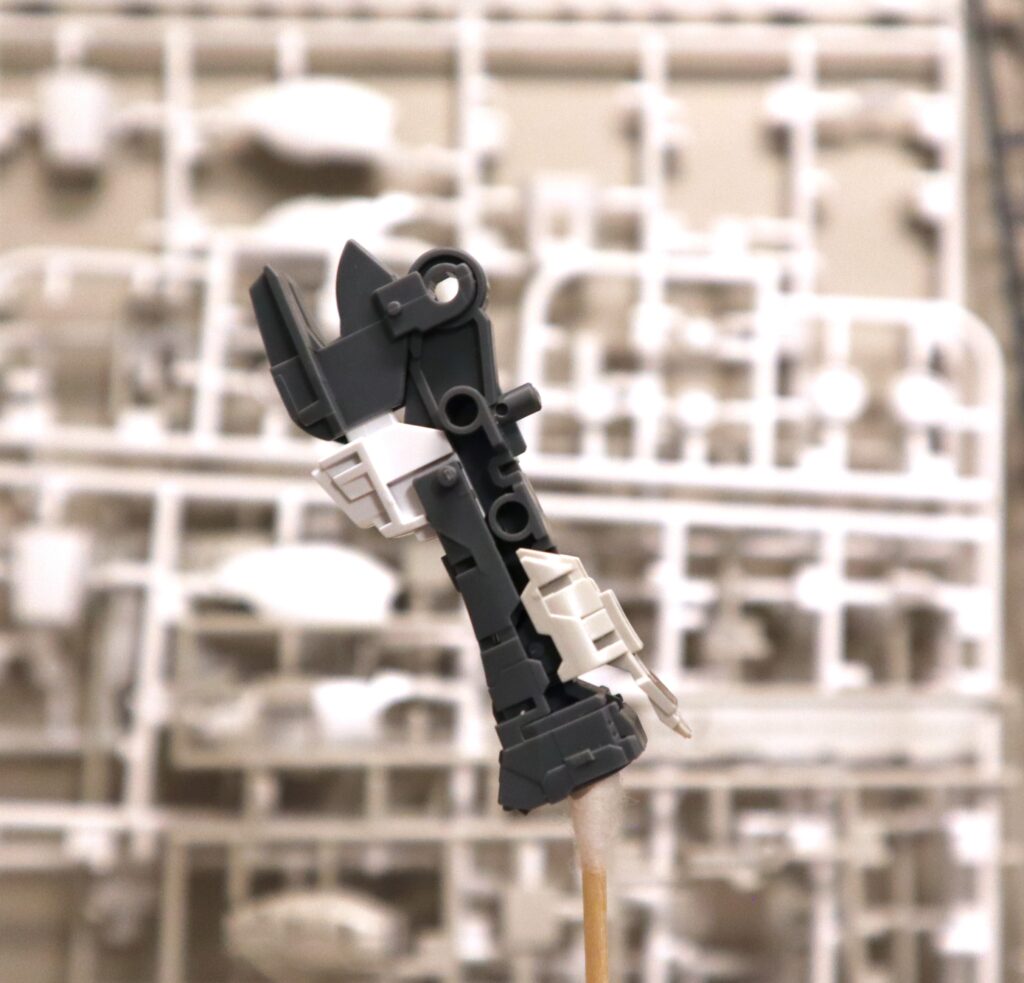
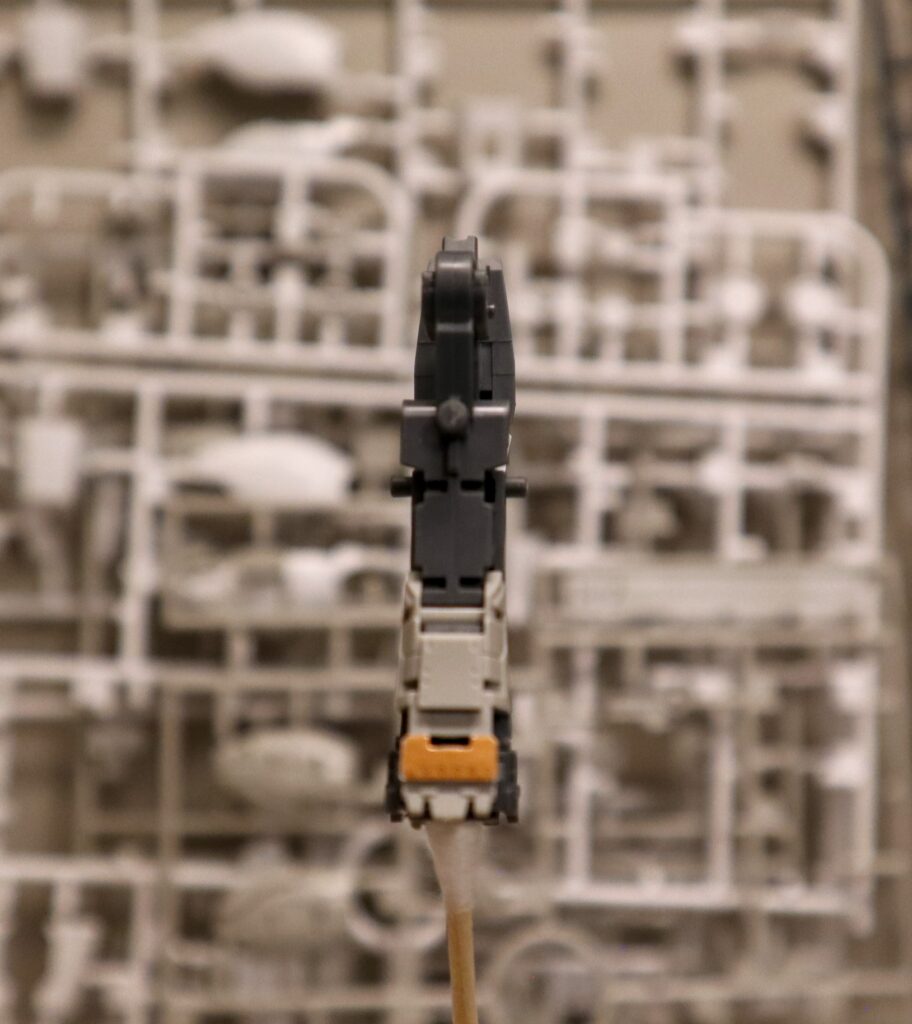
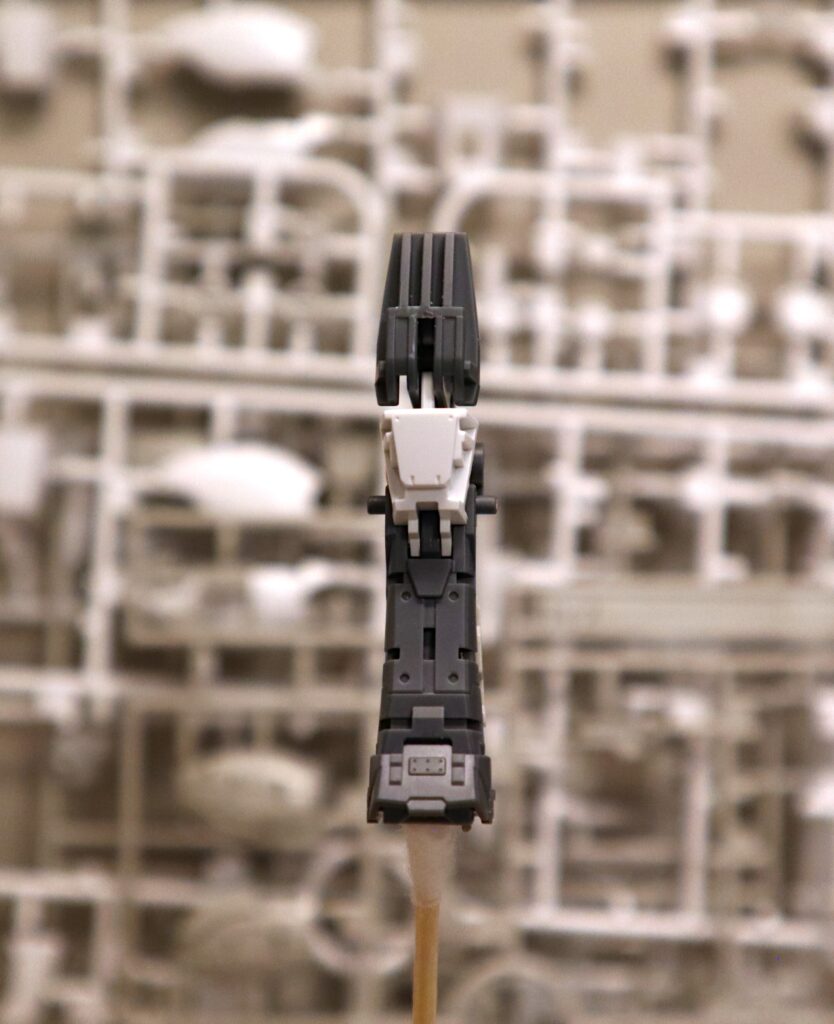
For this one, it was the knee area. The upper and lower plastic frames went together fairly quickly and easily, and the first few white plastic pieces that serve as the leg cladding clicked in like they were supposed to, but it was the knee pieces that tripped me up and it took a few tries to make sure I had them secured and in the right spots.
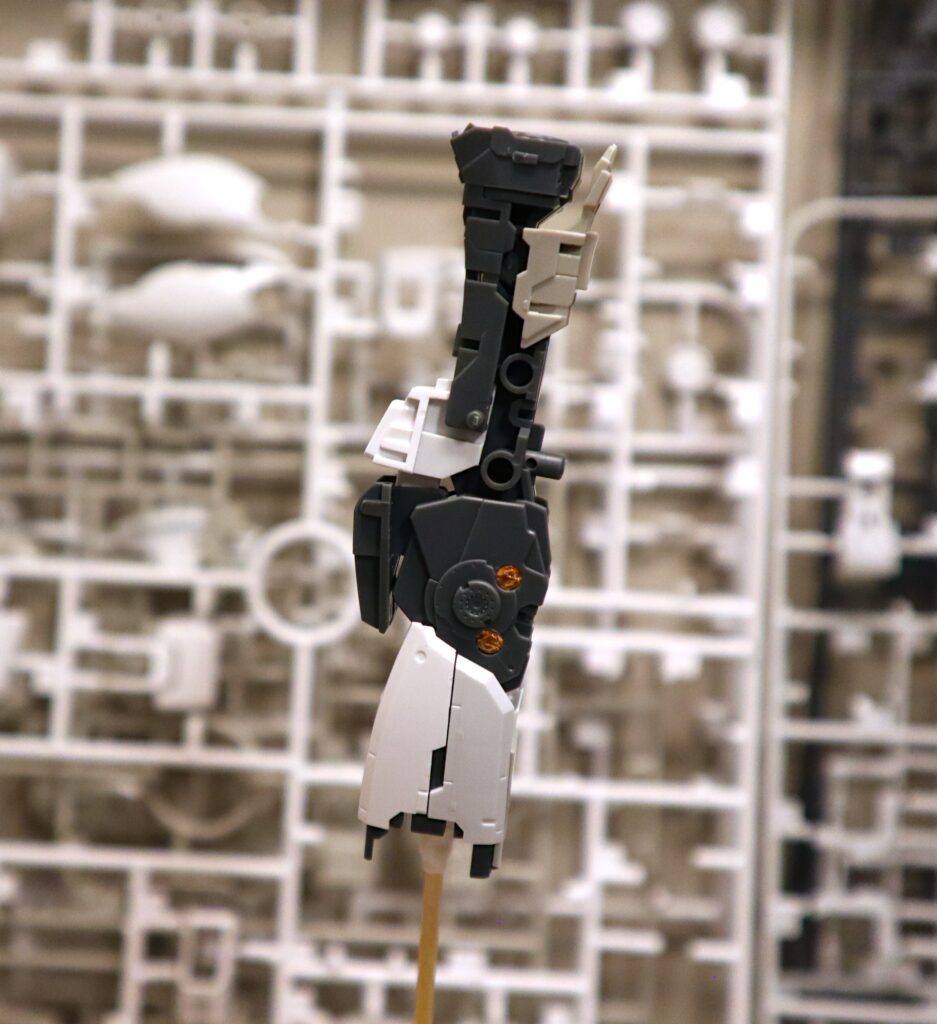
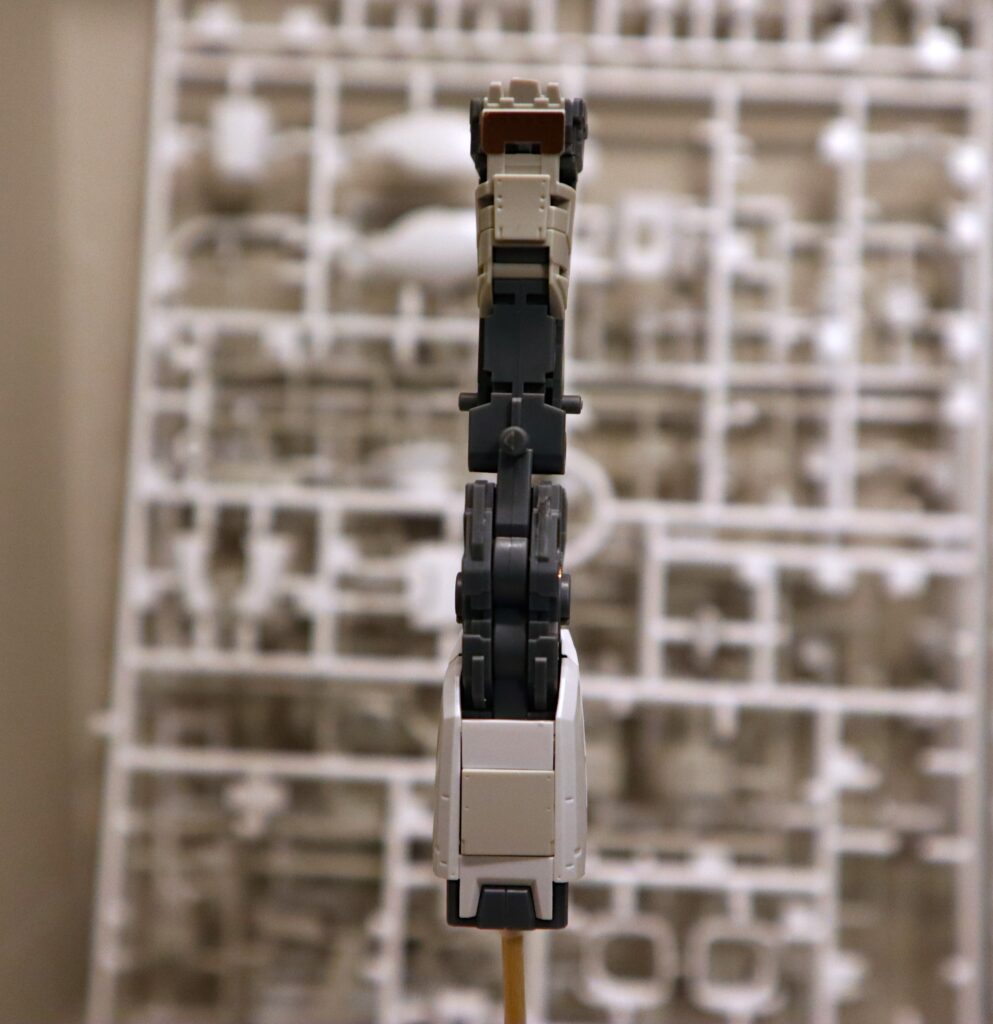
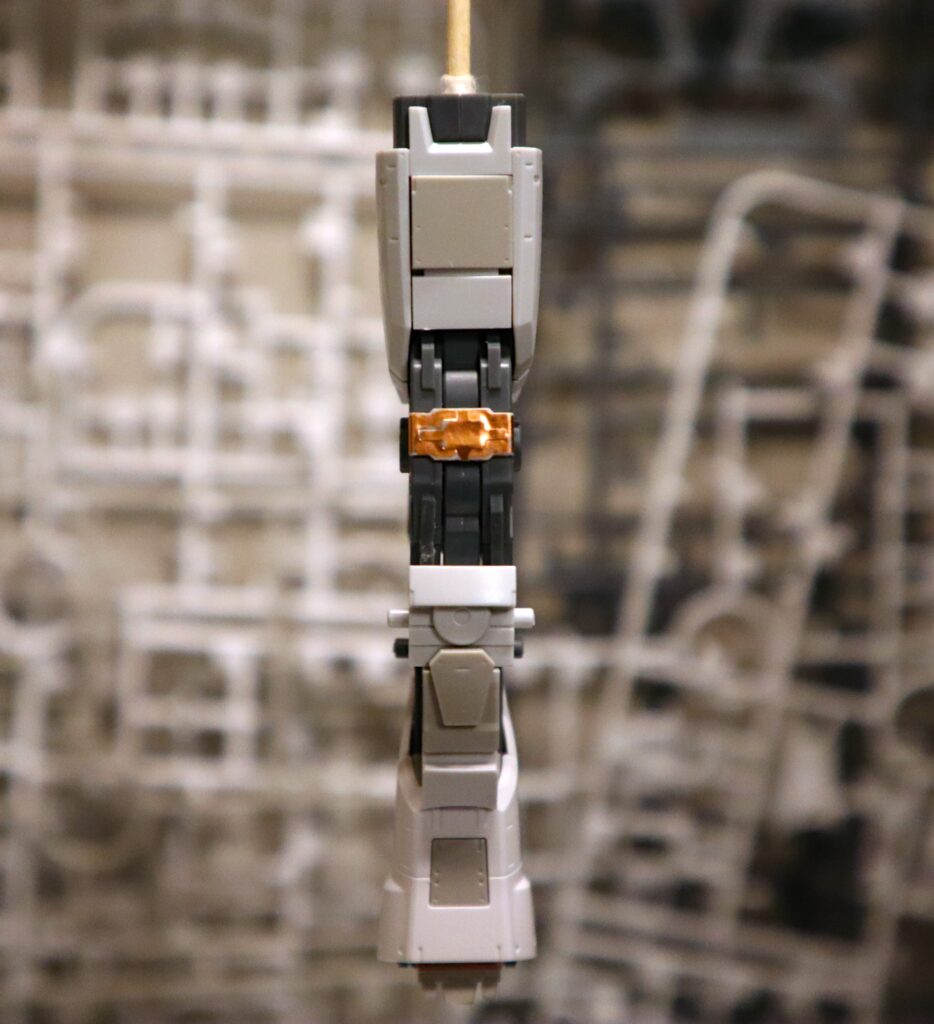
There were also stickers, of course. Tiny, microscopic little dots of foil that I’m supposed to apply with exacting precision to a tiny depression in the plastic.
Fantastic. There’s also a sticker that goes on the backside of the knee and I’m still not sure I did it right. I keep thinking that middle rectangular piece shouldn’t be there and the sticker should serve as framing around it, but before I start cutting into things, I need to think on it some more.
At any rate, it doesn’t look right.
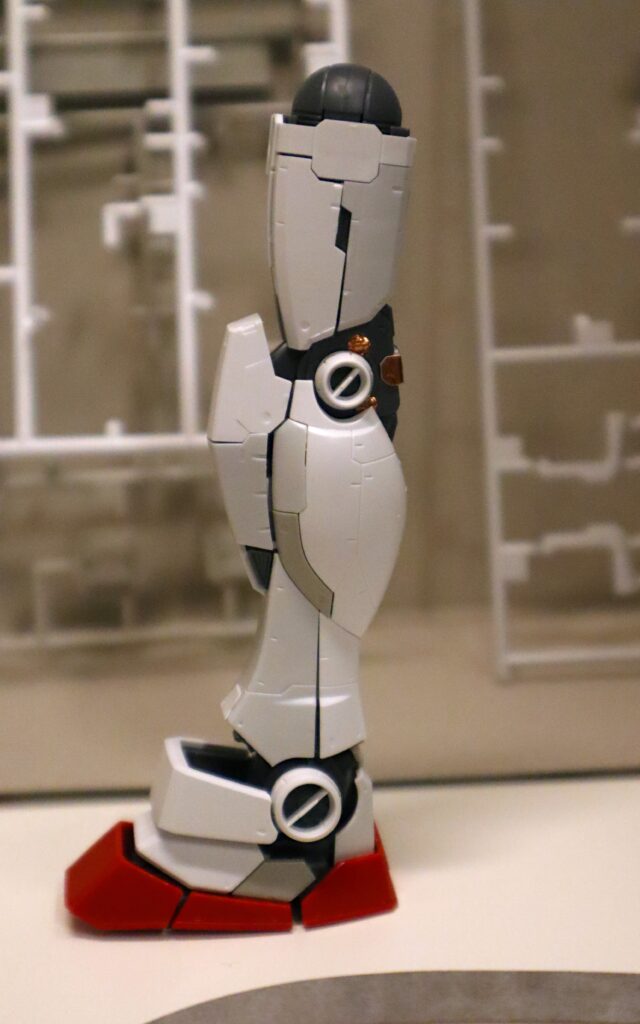
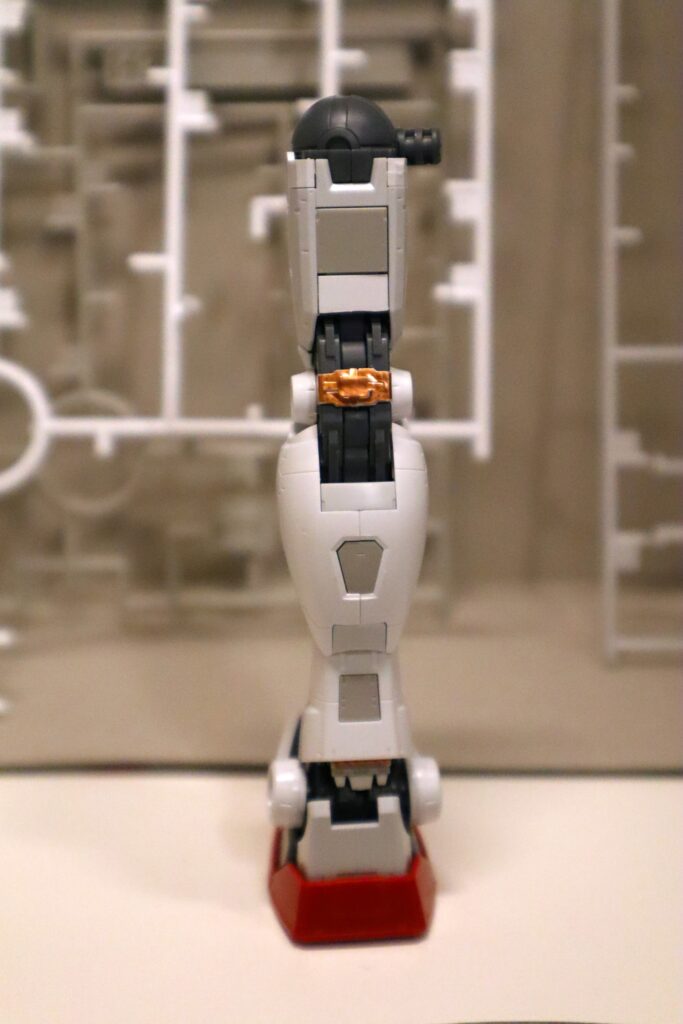
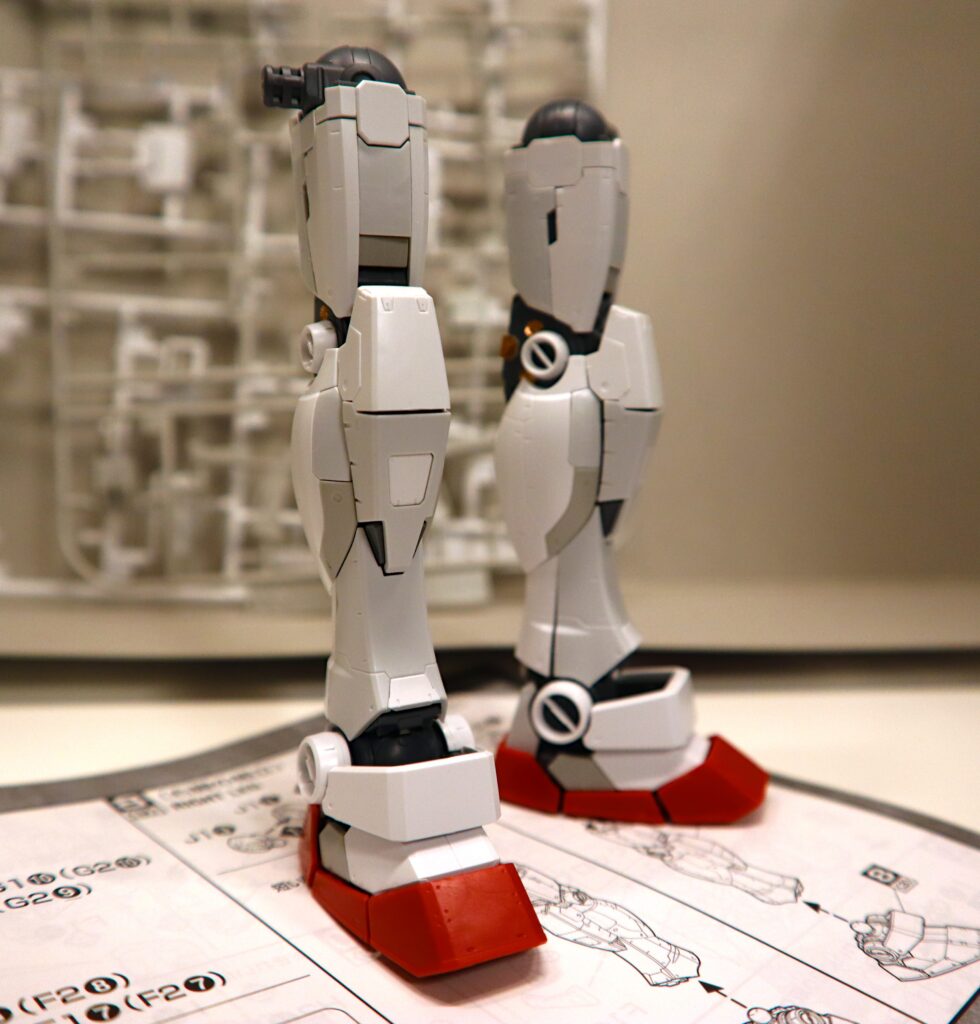
Other than the stickers and the tricky knee pieces, the legs came together quick and they look fantastic. It remind me why I love MG models so much, as the pieces are inherently larger, but they also tend to remain firmly attached and aren’t subject to constantly falling apart at the slightest jiggle or errant wind.
The legs have great articulation and it’s such a satisfying feeling when you can flex the leg and nothing falls off.
It’s the small things in life.

